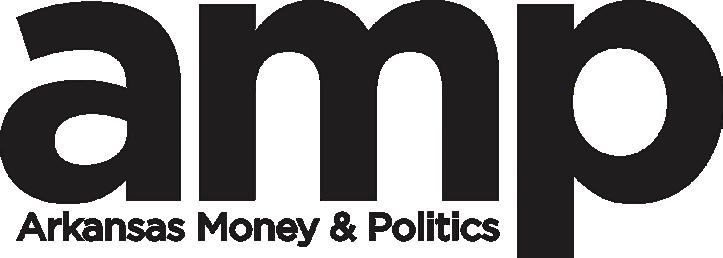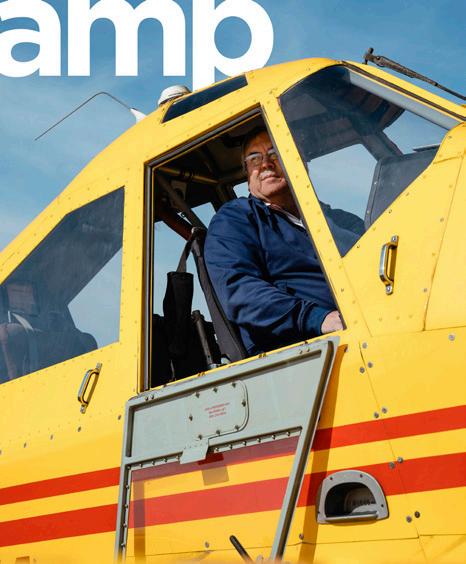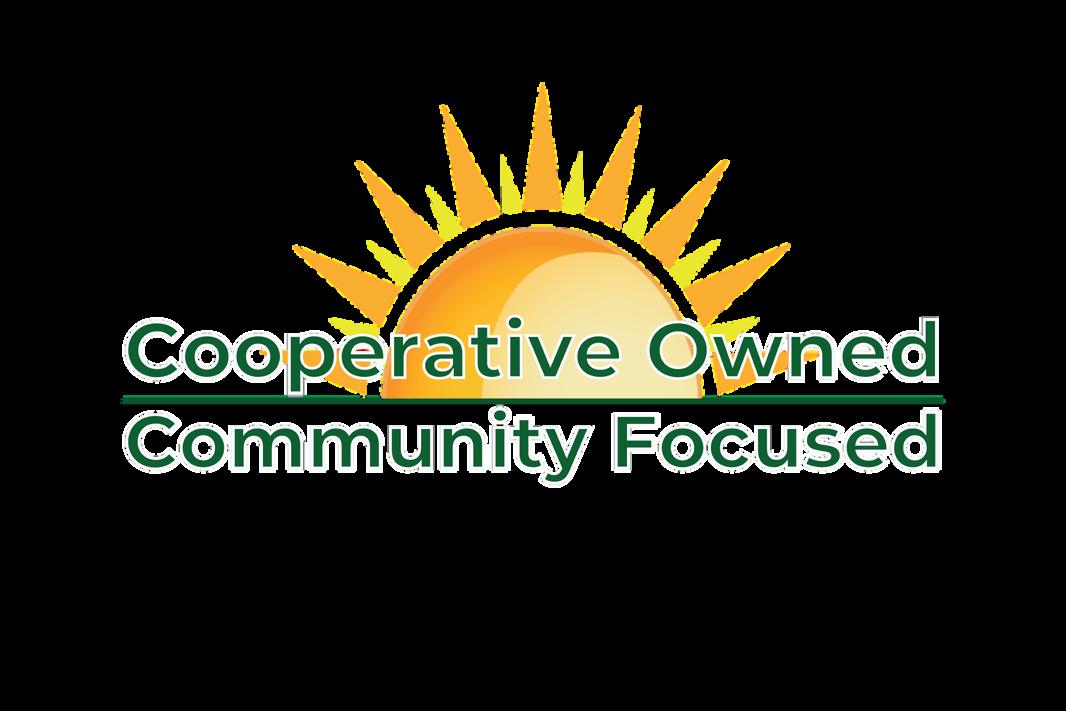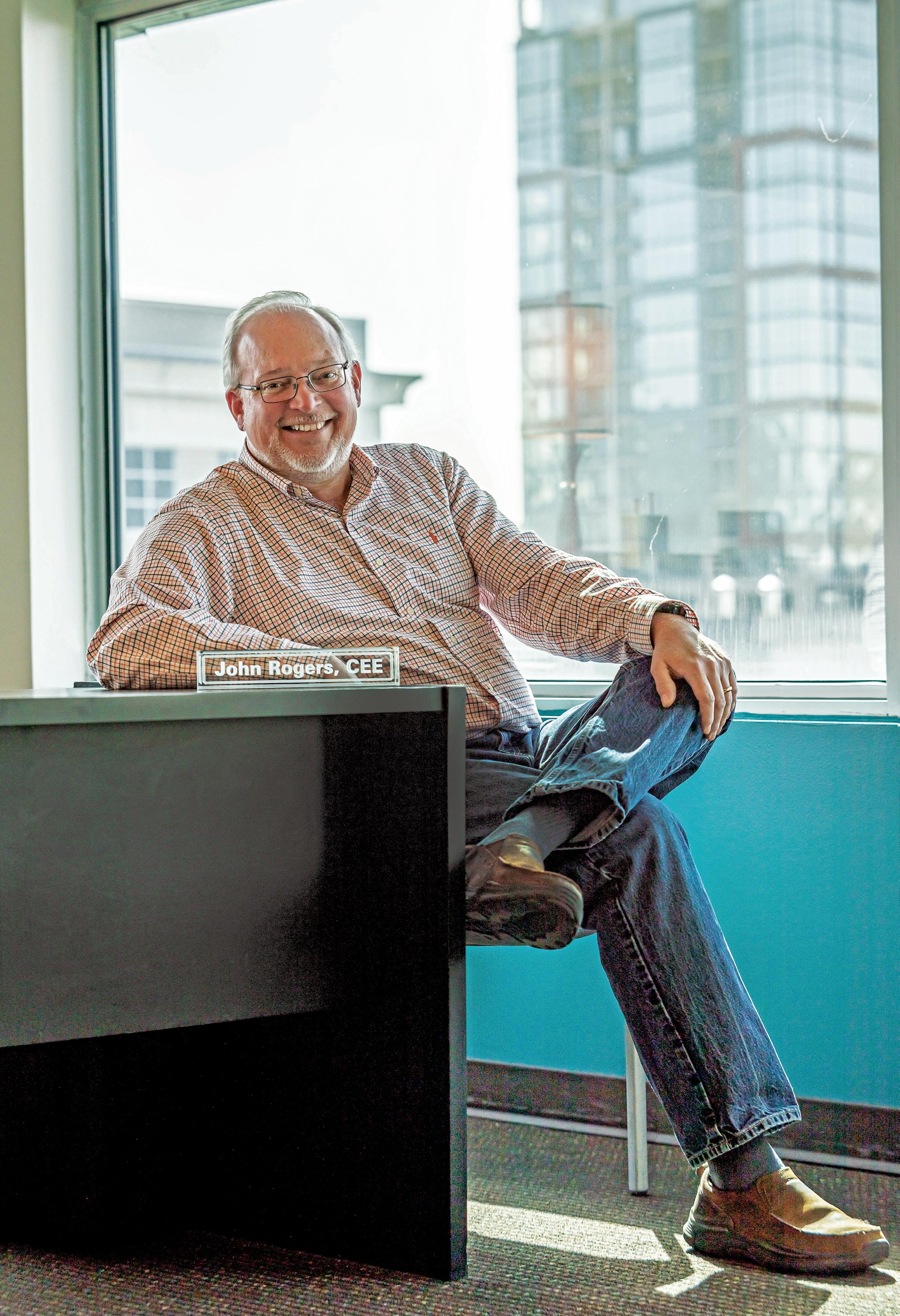AVIATION SKY CHIEF

With planting season underway, crop dusters now fill Delta skies
By Dwain HebdaINSIDE: Razorback softball | Faces of AMP | WR’s Petit Jean example
















With planting season underway, crop dusters now fill Delta skies
By Dwain HebdaINSIDE: Razorback softball | Faces of AMP | WR’s Petit Jean example





















As a rm built on relationships, our handshake matters. It means a warm greeting, the privilege of doing business together and knowing you can count on us. A handshake between two brothers, Witt and Jack Stephens, provided the foundation for a family-owned legacy that Jack’s son Warren upholds today. Under Warren’s leadership, Stephens continues to grow as one of America’s largest privately held independent nancial services rms, with of ces throughout the United States and in Europe. Our performance builds relationships with our clients, many of whom have become old friends. It’s why shaking hands with us means just a little bit more.

111 Center Street




Little Rock, AR 72201

(800) 643-9691














What’s in a name? Everything, if your bank shares a name with an out-of-state institution that’s been shut down.
Millie Ward and Larry Stone
Conway startup guru Jeff Standridge delivers the second in a three-part series on the mental toughness it takes to become a successful entrepreneur.
Another sweet (16) run
Eric Musselman’s Hogs made it to the second weekend of the dance for the third straight season. But what roster changes can we expect for next year?

Girls love (softball) diamonds
Millie Ward and Larry Stone have grown their Little Rock-based advertising and PR firm into one of the state’s most iconic businesses.

For the casual fan, the hoopla surrounding the Razorback softball team may seem out of nowhere, but support has been brewing on The Hill.

PRESIDENT & PUBLISHER
Heather Baker | hbaker@armoneyandpolitics.com
SENIOR EDITOR
Mark Carter
EDITORIAL SERVICES
Ya!Mule Wordsmiths | Little Rock
ASSOCIATE EDITOR
Sarah Coleman | scoleman@armoneyandpolitics.com
STAFF WRITERS
John Callahan | jcallahan@armoneyandpolitics.com
Mak Millard | mmillard@armoneyandpolitics.com
Katie Zakrzewski | katie@armoneyandpolitics.com
MANAGING DIGITAL EDITOR
Kellie McAnulty | kmcanulty@armoneyandpolitics.com
ONLINE WRITER
Kilee Hall | khall@armoneyandpolitics.com
PRODUCTION MANAGER
Mike Bedgood | mbedgood@armoneyandpolitics.com
GRAPHIC DESIGNER
Lora Puls | lpuls@armoneyandpolitics.com
SENIOR ACCOUNT EXECUTIVE
Greg Churan | gchuran@armoneyandpolitics.com
ACCOUNT EXECUTIVES
Tonya Higginbotham | thigginbotham@armoneyandpolitics.com
Mary Funderburg | mary@armoneyandpolitics.com
Colleen Gillespie | colleen@armoneyandpolitics.com
Dana Rod | dana@armoneyandpolitics.com
SALES COORDINATOR
Jessica Everson | jeverson@armoneyandpolitics.com
ADVERTISING COORDINATOR
Rachel Mercer | ads@armoneyandpolitics.com
CIRCULATION
Ginger Roell | groell@armoneyandpolitics.com
ADMINISTRATION billing@armoneyandpolitics.com

CEO | Vicki Vowell
TO ADVERTISE call 501-244-9700
email hbaker@ armoneyandpolitics.com
TO SUBSCRIBE | 501-244-9700
ADVISORY COMMITTEE
Susan Alturi, Scott Hamilton, Tommy Keet, Bobby Martin, Shannon Newton
CONTRIBUTORS
Rebecca Fellers, Becky Gillette, DeWaine Duncan, Austin Grinder, Andrew Hutchinson, Dustin Jayroe, Kenneth Heard, James Masters, Jeff Standridge
In this special sales section, AMP highlights some of the best Arkansas has to offer, from gaming and eating to health care and real estate.
Casual golfers are becoming a vanishing breed as duffers take the game home with them in the form of simulators and home putting greens.
for $5. For subscriptions, inquiries or address changes, call 501-244- 9700. The contents of AMP are copyrighted, and material contained herein may not be copied or reproduced in any manner without the written permission of the publisher. Articles in AMP should not be considered specific advice, as individual circumstances vary. Products and services advertised in


Tommy Anderson of Tommy’s Flying Service was photographed in Sherill (Lonoke County) by Rebecca Fellers for this month’s cover. Dwain Hebda’s story on Arkansas crop dusters takes readers over the skies of the Arkansas Delta.

Page 14
AMP News Team,
Thank you so much for all the articles published recently about ASPSF, including Arkansas Single Parent Scholarship Fund Joins Little Rock Chamber, ASPSF Receives $7,000 Grant From Union Pacific Railroad, A Night of Hope To Raise Funds for Single Parent Scholarship, and Arkansas Single Parent Scholarship Fund Opens Spring 2023 Applications.
With your help promoting our program, ASPSF awarded nearly 400 scholarships totaling about $400,000 to lowincome single parents across the state for the Spring 2023 semester.
We couldn’t have done this without your reporting. Thank you for supporting single parent families on their journey to a better life through education.
BLIND LITTLE ROCK TEEN SHREDS THE SLOPES AT NATIONAL SKI FESTIVAL
“Awesome to watch Cole grow since coaching him in soccer in 2011! Well done!”
Sarah Farmer O’BanionDOG-FRIENDLY BREWERY TO OPEN IN LITTLE ROCK
“I met the owner one day and he is an amazing guy! Can’t wait for it to open and support what they are doing!”
Jeremiah CotnerMarch 7 - April 3 1.
Earlier this month, 17-year-old Cole Carper traveled over 1,000 miles across the country from his home in Arkansas to the wintry mountain town of Breckenridge, Colorado, to take part in the U.S. Association of Blind Athletes’ (USABA) Winter Ski Festival.

John Rogers, the chief financial officer for Stone Ward in Little Rock, was left off AMP’s C-Suite list in the March print edition. His listing can be viewed at ARMoneyandPolitics.com/look-inside-csuite-2023/.


Eyes will be drawn to headlines reporting of disaster before they will those proclaiming steady-asshe-goes. After all, no news generally translates to good news, right? Which, human nature being what it is, translates a step further to boring.

We just can’t help ourselves, in the aftermath of a destructive storm, to gawk at the spectacle. To get out and drive by the symbolic train wreck to see it up close and in person, first responders and folks just trying to get home be damned.
In Little Rock and elsewhere last month, there was plenty of spectacle to see.
The same applies to our collective media consumption. Content related to crime, disaster or heightened personal conflict — spectacle — makes up most of
the subject matter we absorb, virtually all of it cheap and tawdry. We may aspire for the Nice List, but Naughty is vastly more entertaining. It requires little to no effort, after all.
Are we instinctively drawn to it? Do we climb up from and out of the gutter to stamp our name on the Nice List, or do we fall from grace onto its counterpart? From whence do we begin the journey?
The Irishman Oscar Wilde may have hinted at an answer with a line from his 1892 play, “Lady Windemere’s Fan,” kindly recorded for grid-enabled posterity by Google:
“We are all in the gutter but some of us are looking at the stars.”
So, which is it, Hobbes or Rousseau? Is mankind animalistic in nature and
This April issue of Arkansas Money & Politics went to press the week after the March 31 tornado touched down in west Little Rock and shot across the river to do more damage.
These days, especially, it’s not unusual to see images of devastating weather events splashed across the TV, and most Arkansans are familiar with what it’s like to ride out a tornado or experience a close call with one.
But witnessing in person the destructive path of that storm in Central Arkansas was chilling.
It’s a miracle more people weren’t killed. In a hilly, heavily wooded city like Little Rock, one can only imagine what the death toll could’ve been if that twister had dropped 100 years ago or more. No weather apps, no community sirens, no live reports from storm spotters on the scene.
Five Arkansans lost their lives on March 31, not to mention the scores of others killed across the South and Midwest. The trail of destruction left
behind in Arkansas, and also across the South in recent weeks, would suggest many more fatalities. Ironically, AMP already had planned a story in this issue on tornado season in Arkansas and its impact on insurance rates. Little did any of us realize just how timely it would become.
refined by civilization, or inherently good and poisoned by it? The answer, as it usually does, lies somewhere in the murky middle (if not entirely in Paul’s epistle to the Romans).
And as Solomon wrote in Proverbs, “For as he thinketh in his heart, so is he…”
Like the laboring mule, a carrot often is required to keep us on the right track, and sometimes the carrot isn’t enough. The world is a tawdry mistress, all right, but at least we have the stars, necessarily visible as a beacon for which to aspire, anyway.
By Heather BakerTo all the first responders called into action — ER workers, police, fire and rescue, Entergy and utility company crews — you have our gratitude.
Aviation is the focus of this issue. We’ll visit the Delta to talk with a couple of the state’s prominent crop dusters, visit Lockheed Martin’s Camden Operations, hear from Arkansas aviation legend Joe Jett and Dassault Aviation lead man on the ground in Little Rock.
And we’ve got the Hogs, from a look at Eric Musselman’s potential 2023-24 roster to the rise of Razorback softball.
Thank you for reading. The team at AY Media Group works hard to make our publications valuable to you. We know you have other options, and we’re grateful you’ve joined us on our quest to shine a positive light on Arkansas businesses and business leaders.
Please share all your questions, comments and story ideas with me at HBaker@ARMoneyandPolitics.com.

Even before the Arkansas General Assembly gavels into session, the anticipation at the state Capitol is palpable. As expected from the biennial occurrence, everyone is eager to hit the ground running. From Election Day on, we hear rumblings about what issues the upcoming session will address, including what legislation will be in the pipeline.
But the 2023 regular session was more noteworthy than usual. One day after convening, Arkansas swore in its 47th and first female governor, Sarah Huckabee Sanders. Many residents saw the November election as a mere formality due to Sanders’ political lineage and her loyal Republican base. The session set the stage for her to quickly deliver on her campaign promises, including overhauling our state’s education system.
With only 59 days to prepare after her victory, Sanders’ transition team worked overtime to put a framework in place for her major legislative initiatives. And it’s paid off, with her administration and the legislature passing policies to advance her objectives. Simultaneously, the General Assembly has tackled other issues of interest, from unemployment compensation to the certification process for proposed ballot initiatives.
The 2023 regular session will be marked by progress in three key areas:
EDUCATION: From day one, Sanders’ Arkansas LEARNS plan dominated conversations at the state Capitol as other education-relation issues were pushed to the back burner. Once introduced, the 145-page LEARNS Act drew attention and, among certain circles, pushback. One of the most publicly discussed components of the law is its Educational Freedom Accounts. This voucher program, set to be phased in over three years, will provide Arkansas families up to 90 percent of the per-student public school funding rate for use on allowable education expenses, such as private-school tuition. Starting in the 2023-2024 school year, the LEARNS Act will also raise the minimum teacher salary from $36,000 to $50,000.
Teachers making above this minimum will receive a $2,000 raise with additional bonuses of up to $10,000 available to teachers for good performance or for serving in high-demand subject matters and geographic areas. A critical piece of the legislation that has not yet grabbed headlines is the law’s “dual-track” diploma. This provision requires high schools to offer ninth-grade students a “career-ready” pathway with studies aligned with “high-wage, high-growth jobs in Arkansas.” This will be crucial
to Arkansas’ continued economic growth, particularly as we leverage our skilled workforce to recruit companies and bring high-paying jobs to our state.
CRIMINAL JUSTICE REFORM: With the LEARNS Act now law, the legislature will soon move on to sentencing and prison reform. Over the last several years, the Arkansas Department of Corrections has repeatedly highlighted overcrowding at facilities across the state. The shortage has become so severe that certain areas have been forced to keep people in county jails until spaces in state units become available or, worse, let nonviolent, misdemeanor offenders walk. With an estimated inmate population of more than 19,000 by 2028, many elected officials have called for funding for additional maximum-security space.
During her campaign, Sanders said that Arkansas must “devote the necessary resources to increase prison capacity to allow for the retention of violent, repeat offenders and to reduce the backlog in our county jails.” Senate President Pro Tempore Bart Hester has indicated additional sentencing and prison reform bills will be filed, likely as a package, to increase the number of new prison beds in our state by as much as 3,000. These bills were expected to be filed the last week of March. Once introduced, Sanders and the Republican majority will likely shepherd the funding measures through the legislative process.
TAX CUTS: Sanders ran on cutting our state’s income tax. In fact, before her inauguration, she pledged to “work on responsibly phasing out the state income tax to reward work — not government dependency.” This issue remains at the top of her agenda but is largely dependent on funding available after the passage of the LEARNS Act and the sentencing and prison reform legislative package.
Despite its slower start due to new administration appointments and newly elected members of the legislature, the General Assembly is moving full speed ahead. With potentially a few weeks remaining in the 2023 regular session, we can expect more bills to make their way to Sanders’ desk. There may even be a few surprises. Stay tuned.

While Arkansas is blessed with several key industry sectors, such as corporate and shared services; distribution and logistics; firearms and ammunition; food and beverage; metals; technology; timber and forest products; and transportation equipment, it is aerospace and defense with the highest octane “fuel” for Arkansas’ economic engine.
Here are a few stats to support that claim:
• Almost 180 companies in the aerospace-and-defense sector are located in Arkansas. Well-known companies, such as Dassault Falcon Jet, Lockheed Martin, Aerojet Rocketdyne, General Dynamics, SGL Carbon, Radius Aerospace, CoorsTek, Raytheon and American Rheinmetall Munitions, are among the larger companies with operations in Arkansas.
• The aerospace industry in Arkansas generates $1.8 billion in economic activity, with commercial airports injecting another $2 billion and general aviation injecting an additional $500 million annually.
• There are approximately 8,276 employees directly and indirectly involved in aerospace and defense manufacturing, with 4,050 directly engaged in manufacturing aerospace products and parts.
• The aerospace-and-defense sector is Arkansas’ largest exporter. Each year, this sector exports more than $1 billion of aerospace and defense goods, which accounts for 19.7 percent of Arkansas’ total exports. That figure is expected to grow even higher with the F35 jet training contract recently announced from Fort Smith.
• Other aerospace-related areas are drone development and the import/export/distribution of aircraft. The aerospace-and-defense sector also provides additional important economic benefits to the state that might not be obvious. Some of these are:
• Diversity of job creation: As indicated earlier, the aerospace-and-defense industry employs thousands of people in Arkansas, including highly skilled engineers, researchers, technicians, mechanics, machinists and precision-production manufacturing workers. These jobs often pay well and provide benefits, contributing to the state’s overall economic growth.
• Revenue generation: The industry generates significant revenue for the state through the sale of aerospace-
and-defense products, services and technologies. This revenue can then be used to fund other important programs for the state.
• Innovation: The aerospace-and-defense industry is a hub for innovation and research, which can lead to new technologies and products that can benefit other industries as well. Arkansas has several universities and research institutions that work closely with the aerospace-and-defense industry, which can create new business opportunities and partnerships.
• Economic diversification: The aerospace-and-defense industry can help diversify Arkansas’s economy, reducing dependence on other industries that may be more vulnerable to economic fluctuations. This can help stabilize the state’s overall econowmic outlook and provide more long-term stability.
William Burgess is an Arkansas District Export Council (ArDEC) member and co-CEO of Power Technology Inc., a laser technology company in Alexander. He said, “There are many employers in the state of Arkansas who don’t directly manufacture planes and bombs but are still part of the aerospace-anddefense industry. Power Technology Inc. manufactures lasers that are used to test laser-guided munitions, including bombs and missiles. PTI also manufactures laser tools that ensure that airframes are perfectly aligned on the manufacturing floor.”
Mr. Burgess noted that many businesses in Arkansas support the industry in other ways.
“There are repair station operators or maintenance, repair and overhaul (MRO) facilities in the state whose prime business is to refurbish and maintain aircraft,” he said. “Some of these aircraft happen to be from foreign countries. This would count as an export.”
In summary, the aerospace-and-defense industry is an important sector for Arkansas, providing jobs, revenue, innovation and economic diversification to the state and its citizens.
Rudy Ortiz, senior management consultant for Strategic Business Services, is chairman of the Arkansas District Export Council Education Committee.

His title might be Chief Financial Officer, but our team knows his work goes beyond the financial stewardship of our agency. With a Building Good spirit, a love for his community, and a willingness to do anything and everything to keep Stone Ward moving ahead, John Rogers shows all of us what it means to lead with excellence.





To our Chief of Everything Else, thank you for all you do to make Stone Ward great.
mission

www.stoneward.com



New York Yankees legend Yogi Berra reportedly said, “Baseball is 90 percent mental. The other half is physical.”
This classic Yogi-ism is amusing and contains a larger truth: being a top competitor demands intense mental and physical preparation. The same can be said for scientific research, which requires a major league level of dedication. Winning the competition for funding directly affects the speed of translating discovery to the benefit of saving lives and economic progress.
Like any other business (or blood sport) on the planet, in research, you are only as good as your people, especially in the fight for funding.
“Research laboratories recognize that the race for innovation is a war for talent,” said Dr. Hong-yu Li, who has won more than $4 million in funding the lssdt two years as an Arkansas Research Alliance Academy Member and professor at the University of Arkansas for Medical Sciences. “Innovation is a mindset that needs to be turned on 24/7. Early-stage researchers with that drive will always have a home in my lab.”
Chemistry, a complex field in which Li is widely known, is especially demanding. It is the “home plate” for treating things like cancer. For Arkansas to compete in the innovation economy, Li believes it is critical that Arkansas’ science community devote the time necessary to succeed. After all, the work is vital to enhancing our quality of life, and the sooner the research is delivered to the public, the quicker we can all enjoy its enormous impact. Additionally, research infuses the state’s economy with millions of federal grant funding — and the competition for receiving that funding is intense.
“You really have to like research,” Li said. “It’s more than just work; it’s a calling for which they’ve spent the first 30 years of their life studying and getting ready for.”
Building a strong research culture in Arkansas is critical because research is competition.
“We’re competing with labs on the east coast, the west coast and with labs across the globe. Researchers need to recognize that they are in a competition, or they will not see their work leave the lab.”
This research competition has routinely recognized Li, who in 2021 won a five-year, $1.2 million grant from the National Institutes of Health and the National Cancer Institute toward developing treatment options for acute myeloid leukemia patients. Recently, Li’s team earned a $3 million grant to develop new medications for cancer treatments.
How is this money spent? While a portion of the grant money buys equipment and supplies, the majority goes to human capital.
“About 75 percent goes to hiring more people,” Li explained. “And that will bring more research talent to Arkansas.”
Dedicated research talent is vital to Li’s research, which centers on anti-cancer therapeutics. The goals of his team’s research are to develop treatments that provide cancer patients with novel therapeutic agents, such as tyrosine kinase inhibitors (TKI), designed to target tumor cells or the tumor micro-environment. The results of this research can possibly save thousands of lives. It can also cement Arkansas’ reputation as a leader in the development of innovative anti-cancer therapeutics.
Fostering a healthy research culture in Arkansas can go a long way in helping Li bring his research to its happy fruition. The good news is that we can all be part of process. The research culture, Li insists, extends beyond the researchers themselves. It takes the entire community to identify problems that need intense study, marshal the resources to implement a plan and then ultimately ensure the benefits are equitably available to everyone.
“We need more investors in translational research,” Li said, referring to research that seeks to produce more meaningful, applicable results that directly benefit human health. “In Arkansas, investment in translational research can be very hard to get, but we’re making progress.”

Funding stability for investigators attracts the best of the best and moves discoveries from the lab to the bedside and the market.
Discovery Economics is a monthly feature highlighting the work of the ARA Academy of Scholars and Fellows, a community of strategic research leaders who strive to maximize the value of discovery and progress in the state. ARA recruits, retains and focuses strategic research leaders to enhance the state’s competitiveness in the knowledge economy and the production of job-creating discoveries and innovation. Learn more at ARalliance.org.

 By Dwain Hebda
Photography by Rebecca Fellers
By Dwain Hebda
Photography by Rebecca Fellers
Tommy Anderson buzzes through the Delta morning sky, his yellow plane crisp and sharp against the wild blue yonder. Lining up an approach, he swoops across a field as spray flutters behind him, dispensed by nozzles lining his wings. In what feels like an instant, he’s covered the length of the field, and with a pilot’s touch honed over four decades, smoothly moves the stick to gain altitude, safely out of reach of trees and the omnipresent electrical wires below.
There’s no telling exactly how many times he’s done this aerial dance since his first flight in 1981, but a few minutes’ observation — and the knowledge that he’s never crashed a plane — tells you you’re looking at a master at work.
Ask him about his profession and Anderson answers with the unique perspective of an ag aviator, a different breed of pilot who lives life somewhere between aw shucks and oh sh**.
“Well, for me, it’s all about managing your risk,” he said. “I think the trick is you have to be aggressive enough, obviously, to get the job done but cautious enough to live to do it another day.”
You’re not likely to see more accomplished flying than that of Anderson or the 3,400 other agricultural top guns the National Agricultural Aviation Association estimates exist in the U.S. today. Few aerial jobs outside of precision military outfits like the Blue Angels or Thunderbirds demand such unrelenting concentration and skill, as there’s little outside of an active war zone that’s a more dangerous work environment for pilots.
According to the Bureau of Labor Statistics, crop duster deaths only account for about 4 percent of total aviationrelated fatalities, but the laws of scale and proportion make that misleading. Ag pilots generally fly solo, which means crashes don’t incur passenger deaths associated with a commercial airliner. Take the collateral passenger damage out of the picture and the numbers are stunning — despite employing a mere fraction of pilots, ag aviation typically accounts for 10 percent of all pilot deaths annually. Aerocorner.com puts it another way, noting that in 2017, 0.02 percent of ag pilots had a fatal accident, compared to 0.003 percent of general aviation pilots. Moreover, these statistics haven’t changed much over time.

Aerial applications are conducted in all 50 states, treating about 127 million acres of farmland or roughly 28 percent of the nation’s agricultural acres.



Commercial aviation accident rates have taken a nosedive over the past few decades with 80 percent improvement between 2007 and 2017 alone. Last year, the International Civil Aviation Organization reported a 10 percent decrease in accidents and 66 percent decrease in fatalities compared to 2020, even though total scheduled flights were up 11 percent worldwide. Meanwhile, crop dusters average about five wrecks a month in North America alone.
As a matter of fact, of the 21 aviation incidents in Arkansas investigated by the National Transportation Safety Board last year, five involved crop dusters, including one mid-air collision between two planes near Portland. In all, the crashes resulted in three fatalities.

The inherent dangers of the profession are self-evident and numerous, from power lines and tree windbreaks to mechanical failure. Yet Anderson remains philosophical — you can’t very well devote 40-plus years to a career that puts your butt 15 feet off the ground at 150 miles per hour without a certain acceptance of hazard.
“It’s completely different than it was when I started in 1981,” he said. “In the ’90s, most people started operating turbine airplanes, and about that time they developed GPS guiding systems, so we no longer had to have human flaggers in the field. That technology has improved over the years and made our job so much easier, and the airplanes are all air-conditioned and heated.
“No doubt, I’ve had friends who’ve lost their life doing this. But I always felt when my dad and I quit farming and he started driving an over-the-road truck, and I still believe this, his job is just as dangerous if not more than mine.”
Agricultural aviation traces its roots back more than 100 years. In 1921, John Macready took off from Dayton, Ohio, in a Curtiss JN-6 “Jenny” bound for nearby Troy. The Army test pilot and former World War I fighter ace was running a sortie of another magnitude, to repel a horde of catalpa sphinx moths threatening a grove of catalpa trees. After six passes, as noted by Flying magazine, the enemy was vanquished, and a daring new industry was born.
Over the subsequent decades, the industry grew rapidly both in number of companies and aviation technology, as aircraft manufacturers began producing models specifically for the job. One company, Huff-Daland, leaned hard into the new industry, designing a biplane for the work, dubbed The Puffer, and forming an agricultural division, Huff-Daland Dusters, in 1925. The company’s 18 planes represented the largest privately owned fleet in the world at that time, but it was just the beginning; 20 years later, Huff-Daland rebranded as Delta Air Lines.
Today, there are about 1,560 aerial application businesses (the industry’s preferred term) in the United States, with at least one located in all but five states, per NAAA. Aerial applications, however, are conducted in all 50 states, treating about 127 million acres of farmland or roughly 28 percent of the nation’s agricultural acres. Use on timber lands is even more robust; NAAA reports nearly all of the nation’s forested acres are treated via air.

Anderson’s operation, which he bought in 1994 after 11 years as a staff pilot, runs roughly from Pine Bluff in Jefferson County to England in Lonoke County, treating corn, soybeans, cotton, rice and wheat. Contrary to popular perception, his services aren’t just limited to the growing season.
“We start off the year with what we call the burndown sea-
son,” he said. “Minimum till or no-till agriculture is much more popular than it was 30 years ago, so we’ll spray and clean the ground up. Also, we’re fertilizing the winter wheat crop, so that’s something that keeps us going. Rice planting, the normal season, will be around the first of April and go through the first of June.
“June is our busiest month; we will do sometimes 20 percent of our year’s business in the month of June, and then we’re still busy in July and August. September, it starts tapering off, but in 2022, we did some flying all 12 months.”
Anderson is typical of most operators, the vast majority of whom are either current or past crop dusters. Stan Clark, owner of ChrisAir in Lake Village, however, is an anomaly. While he holds a pilot’s license, he doesn’t actually spray fields, instead focusing on overall strategy and executive leadership where he keeps a steady hand on the rudder, navigating changing market slipstreams.

“Any [agricultural aviation] operation in the country, probably more so than any other business, operates under a unique environment,” he said. “No two operations are the same; number of customers, relationship with customers, how far you go,
what you apply and in which season. There’s a lot of different dynamics.”
“In our case, we used to do aerial seeding, but there’s not a whole lot of that in our part of the world; we may only see a few hours of actual seeding anymore. But we’re fortunate enough in southeast Arkansas to retain a pretty diverse crop mix, and we’ve continued to have a decent amount of cotton and rice and soybeans and corn. A lot of places in the country, that hasn’t really been the case, and as things have come and gone, it’s been a little more volatile.”
Clark said the advantages to a farmer using aerial application versus pulling a spreader behind them on a tractor generally boil down to time and practicality. He said serving a 15-to-20 mile radius, as ChrisAir does, ensures the company can respond quickly to customer needs.
“There are times where there’s an economic benefit to using the airplane because it’s wet and you’d be rutting up the field and damaging your surface there. Obviously, there are some situations you get into, like a flooded rice field, where you could never do it [with ground equipment],” he said.
“You may have limited time, like maybe ahead of some
June is our busiest month; we will do sometimes 20 percent of our year’s business in the month of June, and then we’re still busy in July and August.
Crop dusters face unique obstacles to making their businesses fly but also some run-of-the-mill issues like the volatility of fuel prices.
weather, for putting out fertilizer. And then later on, when you start irrigating, you’ve got to shut off irrigation water before you can run across with ground equipment. Then you’re out there running over all your pipes because they run right up to where you’ve planted. A lot of times, once they start irrigating, especially cotton, that’s usually the end of ground operations, so as not to damage irrigation piping.”
For everything that’s unique to the crop dusting business, there are equally pressing concerns that are more run of the mill to other industries, such as regulation, attracting and retaining personnel, capital and equipment investment and controlling operating costs.

“Well, of course, the cost of fuel is a huge one,” Clark said. “The airplanes we operate now burn a tremendous amount of it, and [price is] so volatile, you can’t count on it one load of fuel to the next. It’ll jump around rather dramatically.
“The cost of the equipment makes it a little more restrictive, probably not so much from our standpoint, but for a new pilot to get into the business. In the 1970s, it was all small, inexpensive, slow ag planes, and there wasn’t much of a step to get into something like that. Now the airplanes that we operate are giant, 1,300 horsepower, and they can carry as much payload as a B-17 could carry on a long-range mission with bombs.”
More specifically, each crop dusting outfit in the U.S. runs 2.3 aircraft on average, per the NAAA, each costing from $100,000 to $2 million, depending on hopper size, engine type and engine size. The vast majority of aircraft are fixed-wing models — 81 percent turbine powered and 19 percent piston engines — with 16 percent of applications done by helicopters.
Compared to other private planes, ag aircraft is designed to be the burros of the sky, with fewer frills in terms of comfort but built exceptionally tough to withstand between 30 to 100 takeoffs and landings daily, much of it on rough landing strips.
Costly though it may be, improved aircraft and other technology has helped companies be more efficient. In the past, human flaggers on the ground moved along the length of a field, showing the pilot where each pass ended to ensure even coverage. Today, advanced sprayer controls and GPS guidance have taken
over to make crop dusting much more precise.
“We’re held to a lot higher quality standard than we would have been decades ago, plus the cost of the products we’re putting out is a lot more expensive and potentially a lot more damaging to adjacent crops,” Clark said. “The GPS guiding systems and centimeter-type accuracy and flow control systems have made the pilot’s job less subjective, as far as where you are in the field, and given them the tools to do a more precise job.
“It’s a completely different business than it was 20 years ago, as technology improves and equipment improves. Even something like our scheduling software that we use, which is all cloud-based, I can email map files to pilots that they install in the airplane. You used to have someone come out and point on a map, if you had one available, what they wanted you to do. It’s just very different than when we started.”
A&M Flying Service
Carlisle
Arkla Flyers
Portland
Ark Mo Aviation
Pollard
Ark Tex Aviation
Texarkana
Ashley Air Demott
Dermott
Aufderheide Flying Service
DeWitt
Bell Flying
Newport
Bullock Flying Service
De Witt
Bush Hogging
Malvern
Cameron Aerial Application
Omaha
Cartillar Flying Service
Hickory Ridge
Chism Flying Service
Brinkley
ChrisAir
Lake Village
Corning Farm Supply
Corning
Custom Air
Roe
Desha Flying Service
Tillar
Dixie Flying Service
Bradley
E & M Flying Service
Holly Grove
Farm Air
Minturn
Farm Brothers Flying Service
Altheimer
Farm Brothers Flying Service
Gould
Farm Brothers Flying Service
Pine Bluff
Farmers Aerial Seeders
Stuttgart
Farms Gwin
Stamps
Flanigan Aviation
Pollard
French Agri Services
Jonesboro
Frost Flying
Marianna
George Tidwell Flying Service
Carlisle
Gibson Flying Service
Marianna
Girdley Flying Service
Keiser
Glosup
McGehee
Glover Flying Service
Tillar
Grubbs Aero
Harrisburg
Hamlin Flying Service
Wynne
Hammock Flying Service
Walnut Ridge
Hartley Flying Service
Stuttgart
Hickman Crop Dusting
Hazen
Holly Grove Flying Service
Holly Grove
Hoxie Flying Service
Walnut Ridge
H T Hankins Flying Service
Oil Trough
Ives Brothers, Inc.
Wheatley
James Price Flying Service
Blytheville
J Harmon Flying Service
Jonesboro
J & R Flying Service
Alicia
J T Hall
Weiner
Keller Flying Service
Weiner
Keo Flying Service
Keo
King Agricultural
Flying Services
Dumas
Larry Lester Flying Service
Augusta
Lepanto Crop Service
Etowah
Marked Tree Flying Service
Marked Tree
McCormick’s Crop Care
Paragould
Morrison Aircraft Corporation
Cash
North Hughes Flying Service
Brickeys
O & K Aviation
Grubbs
Osceola Aerial Services
Osceola
Penrose Flying Service
McCrory
Perkins Air Service
Dumas
Poorboys Flying Service
Bay
Propst Helicopters
Black Rock
Quinn Aviation
Caraway
Rice Flying Service
Corning
Richard & Toni Whitehorn
Piggott
R & W Flying Service
Knobel
Sandy Kings Bush Hoggings
Bonnerdale
Shivers, Inc.
Proctor
Simpson Flying Service
Dell
Skarda Flying Service DeValls
Bluff
South Delta Aviation
Helena
Southern Aire
Cotton Plant
Southern Airworks
Tillar
S & S Flying Service
Bono
Standridge Flying Service
Lake Village
Stokes Airport
Earle
Stokes Flying Service
Parkin
Summit Helicopter
Western Grove
Tommy’s Flying Services
Sherrill
Trites Flying Service
Gillett
Turrell Flying Service
Turrell
United Agri Products
Blytheville
Wallin Agri Aviation
Walnut Ridge
Ward’s Flying Service
Eudora
Webb Flying Service
England
Weldon Flying Service
Tupelo
Whirlwind Aviation
Fisher
Wilburn Johnson
Weiner
Wilmot Aero Wilmot
Wilson Flying Service
Walnut Ridge
Source: CropDustingServices.com

Arkansans are a welcoming lot, but when it was announced last year that Central Flying Service was changing hands after 82 years of family ownership, the news raised eyebrows. Now, as it approaches the one-year anniversary of taking over the storied company, Tricoastal Ventures leadership sees a clear horizon ahead.

“We have developed a strategic plan for the next five to 10 years that has Central being the hub of what will be other maintenance facilities, other operating facilities,” said Herb Knight, COO. “The framework says we’ll be basically from the Rockies to the Mississippi, from the Gulf to the Canadian border, but we’re not tied to that. We’ve looked at facilities in the Northeast, we’ve looked at facilities in Florida.”
Knight and partner Phil Jordan, CEO, spent their first 11 months at the helm reconfiguring the company’s business model with regular input from remote third partner and Chairman of the Board Brian Raduenz. Implementing a strategy best described as addition by
subtraction, the company became more focused on its core competencies as it has poised for growth, Knight said.
“As we grew into defining this organization, we knew we were going to be in the maintenance business,” he said. “Central, before we got here and after they sold the FBO business in 2015, really tried to do it all.
“In the 11 months that we’ve been here, we’ve really redefined what we do and what we don’t do. We’ve redefined our flight operations, redefined the maintenance operation; we’ve said we don’t need to fix everything because we can’t do everything well.”
In purchasing Central, Tricoastal gained a number of operations, including a flight school and charter business, but Knight said the acknowledged leader of the pack is the maintenance division. Given that, it was especially important to bring efficiencies to that area of operations. Maintaining parts and mechanical expertise for Dassault Falcon jets, for example, was one aspect that made little business sense, given the French company’s Little Rock facility sits just on the other side of Clinton National Airport.
“Once we established that and defined what we are, people understood that we’re not equipped with facilities or training to work on brand new Dassault Falcon jets; they’re already doing that over there,” Knight said. “What we do have is a great workforce built up of people who are the best at what they do. We’ve really defined our scope to make it a recipe for success.”
The new strategy also made particular sense given the supply chain nightmares that still plague companies dealing with aviation parts, especially for older airplanes.
“There are airplanes that are out of production, but the people who own them love them, and they recognize it’s a great performer. When it breaks, though, there’s limited options,” Knight said. “Airplanes are bought to be parted out, which is a heavy investment because you’ve got the cost of the acquisition, you’ve got the cost of the de-manufacturing, you’ve got the cost of tagging and inventorying and storing. But there are certain components that have to be done that way.”
Knight said Tricoastal has also found success through forming partnerships with fabricators who, in the total absence of replacement or cannibalized parts, can manufacture one specifically for the job at hand.
“The core of landing gear, for example, may be repairable; the seals may just have to be replaced,” he said. “Going back to the manufacturer of that landing gear doesn’t make sense. They don’t
want to be bothered with a one-off.
“We have some relationships where we know they are skilled in repairs, that they understand how to disassemble and recreate that component in the landing gear that’s not being built anymore, and are not shy about investing in a process to make it a repeatable process. We work together with people like that, and it helps us alleviate the obsolescence.”
Adapting to change can sometimes be a dicey proposition, especially in companies as tenured as Central. However, Knight said employees have adjusted well to the new thinking.
“We are trying to define the areas that we have developed our skill sets on and that we concentrate on, so we can succeed where we should and not try to be everything to all people, because we disappoint people that way,” he said. “We’ve brought a new culture to an organization that’s been here and had a little bit of dust and some deeply entrenched roots that had to be changed, but it’s been embraced.”
Even with a slimdown of maintenance operations, there’s plenty of diversity in Central’s service offering. The flight school will continue as will aircraft management, sales and advisory services. As well, the Little Rock facility will benefit from Tricoastal’s other ventures, especially its sister companies dealing in new Volare Air and Kodiak aircraft sales, which will engage Central to provide full-service, authorized maintenance for a growing number of owners of these planes.
And that’s not even touching on management’s eagerness to expand its physical footprint. Knight said the company is actively seeking additional locations. In the process, they’re discovering that for many operators, COVID was the last straw, and they’re looking to sell. On the other hand, money for acquisitions isn’t as cheap as it has been over the past couple of years.
“The painful reality is the cost of money now,” he said. “It wasn’t that long ago you could borrow for 2 percent, and now it’s 7 or 8 percent. That won’t eliminate those opportunities, it just changes the thresholds a little bit. You’ve got to have a plan, but we’re pretty sure we’ll be in Texas with the Central brand this year and probably somewhere in the Rockies not far behind that.”
The story of Central Flying Service is a key chapter in the history of Arkansas aviation, and a rich history at that. Although most of the non-aerial public may not know it, Arkansas is sacred ground when it comes to aviation from its first well-documented flights at Fort Smith in 1910 and in Pine Bluff and Fayetteville in 1911.
In the 11 months that we’ve been here, we’ve really redefined what we do and what we don’t do.
The Natural State has produced warriors including World War I’s John MacGavock Grider, who died in action in 1918, and Wendell Archibald Robertson, who ranked ninth in kills among American World War I fighter pilots. In World War II, 14 Arkansans registered five kills or more to earn the title of “ace,” while three native Arkies made history as part of the elite Tuskegee Airmen.
Arkansas’ impact was even greater in peacetime. Charles Lindbergh’s first night flight took place over Lake Chicot (commemorated with a monument in Lake Village). Katherine Stinson and Louise McPhetridge Thaden broke both speed records and stereotypes with their accomplishments in the first half of the 20th century.
Sandwiched in between, Central Flying Service played an integral role in the state’s private aviation industry. The company’s origins date back to the 1920s, when Claud Holbert joined the Arkansas Air National Guard, having lied about his age to get in.
Infatuated with aviation, Holbert did anything he could to be in the air, including flying in the Guard, working as a flight instructor and even aerial photography. In 1940, he founded Central Flying Service to take advantage of the new Civilian Pilot Training Program, launched to increase the ranks of trained pilots in response to growing threats in Europe.
Expansion would take time. Richard Holbert, who succeeded his father at the helm of the company, told AMP magazine in 2022 that between 1939 and 1961, the company had less than $1 million in annual sales and 25 employees, at most, at any given time.
From there on, however, Central Flying Service hit the throttle and, with the 2002 acquisition of MidCoast Aviation of St. Louis, became the largest full-service FBO in the world at that time,


measured by square footage under roof. Headcount swelled to a peak of 300 workers, now closer to 100.
The company’s longevity and reputation made it the company of choice for the who’s who in Arkansas business. Holbert recalled Sam Walton telling him his airplane was a key element in building Walmart, given the legendary retailer’s penchant for visiting his stores personally at least once a year.
“When Winthrop Rockefeller came to Little Rock, or to Arkansas, he chose my father to be his personal pilot,” Holbert said. “Dale Bumpers was a real good customer, even when he was a senator. When he’d come to Arkansas, he’d have to fly to wherever in the state making speeches, and he would charter planes.
“Any president that’s ever come to Little Rock has come through us. I can remember Ronald Reagan made a speech out on our ramp. In fact, Ronald Reagan was here several times, even back when he was a candidate. I remember Jimmy Carter coming in. Back when Bill Clinton opened the library and everybody and their brother came, most all of them came through our place.”
As they take over the legendary company, the new owners are committed to maintaining Little Rock as headquarters, even as they look to expand operations into new markets. Both Knight and Jordan have relocated to Central Arkansas full time, while Raduenz remains based in California.
“I’m a New Englander my whole life and [Jordan is] a Texan, and neither of us really understood Arkansas prior to this,” he said. “But wow! This has become our new home, even as we’re still getting to know it. We’ve embraced the community and, most importantly, we’ve been able to bring this culture to where not only in Arkansas but people in other locations can see what we’re building and why.”
Joe Jett is director of business strategies and corporate development for Rose Group Advisors in Little Rock, but the former five-term state representative spends most of his time at the family farm in Success or in the skies above it.
His hometown lies northwest of Corning, just off the Current River. Its run through Clay County designates a line of demarcation between the orderly green grid of the Arkansas Delta and the rough-and-tumble lay of the Ozark foothills.
Jett, who works with the Arkansas Aerospace & Defense Alliance, has seen that line many times from above. He’s a former state representative who served five terms in the Arkansas House, as well as a former member of the Arkansas Division of
Aeronautics Commission. While enlisted as an air traffic controller, he attended the Community College of the Air Force, where he received the United States Air Force Commendation Medal.
Jett also attended Phillips University and Embry Riddle Aeronautical University and holds single and multi-engine instrument flight instructor licenses and an airline transport pilot license.
And he’s a certified aerial firefighter who’s flown numerous missions, to boot.
Jett is as connected as it gets into the aviation industry in Arkansas, and AMP caught up with him in between trips from the Jett farm in Success to Little Rock.
AMP: The aviation/aerospace industry in Arkansas — excuse the pun — flies under the radar. Does Arkansas as a state punch above its weight class in aviation?
Jett: Absolutely, Arkansas is the envy of not only surrounding states, but the rest of the country. A big reason for that is the way Arkansas supports our airport network. Arkansas airports — 90 publicly owned — receive grants through the Division of Aeronautics. Taxes on sales of aviation fuel, parts and repair on certain aircraft and sales of aircraft are placed directly into the Aviation Trust Fund, then disbursed to airports for safety and economic development projects. That keeps participating airports safe and self-sustaining in their communities. A 2016 study commissioned by the Division of Aeronautics found that Arkansas airports have an economic benefit of more than $3.5 billion to local communities.
When you travel the state, you will find many great airports operating at very high levels. At the end of the day, air trans-
portation is about traveling from point A to point B. If only a few airports were kept to high standards and the rest were safety hazards, our airports would be a liability, not an asset. Thankfully, Arkansas sees aviation as a good investment, and this will allow us to continue landing solid investment “punches.”
AMP: Many Arkansans might be surprised to learn that aerospace/defense represents the state’s No. 1 export. How does Arkansas compare per capita to other states in this area?
Jett: Most Arkansans would say rice or poultry is Arkansas’ No. 1 export to the world. Very few realize that aerospace and defense have such a large presence in the state.
More than 170 aerospace and defense companies call Arkansas home. Those companies generate well over $1.03 billion in exports. The aerospace industry is by far the largest value-added industry to the state.
The Arkansas General Assembly has made positive strides in

“Very few realize that aerospace and defense have such a large presence in the state.”
supporting these businesses, making Arkansas a more businessfriendly state for the aerospace and defense industries. One example is a law known as a “state fly-away exemption.” This allows aircraft to come into the state for maintenance or other work and then be sold to an out-of-state buyer without any tax liability. This is a huge win for the maintenance repair and overhaul (MRO) shops that conduct maintenance on aircraft. Other examples include expanding the tax exemption for repair, parts and labor on aircraft and the effective elimination of the sales tax on machinery and equipment used in manufacturing.
AMP: Are the state’s primary commercial airports poised to begin bouncing back with the industry in 2023?
Jett: I think time will tell on this issue. But one thing is certain — air travel will always be an important factor in everyday life. While air travel is certainly cyclical, it’s still the most efficient, safest form of travel.
AMP: An important part of growing aerospace and defense in Arkansas is telling the story. Who are some of the stronger advocates for the industry?
Jett: They are several that come to mind. On the private side, a very cool thing going on over in Northwest Arkansas is led by a company called the Runway Group. They are involved in everything from building world-class aerobatic aircraft, opening up backcountry airstrips for aviation enthusiasts to enjoy the beauty of Arkansas to operating an outstanding aviation operation at Thaden Field in Bentonville.
In addition, I’m excited to be working with the Arkansas Aerospace and Defense Alliance (AADA). It’s a trade association representing more than 55 aerospace and defense companies and represents the core of what makes aerospace and defense such an asset to Arkansas. From known powerhouses such as Lockheed Martin, Dassault Falcon Jet and Aerojet Rocketdyne to some of the homegrown companies like CMT, AirReady MRO, Cobalt, Rose Aircraft and Mundo-Tech, they represent the ‘A to Z’ of Arkansas aerospace, defense and aviation.
Finally, the Arkansas Economic Development Council does a great job recruiting new companies and promoting Arkansas as an aerospace/defense state. They are strong advocates for the industry and, through their partnership with industry leaders, Arkansas will be represented at the Paris Air Show this summer. This will truly give Arkansas a global presence. There are others that play important roles but too many to name.
I’m proud and appreciative we have so many talented and effective people working to promote and grow our industry.
AMP: The state has a rich aviation history — Eberts Field in Lonoke, where WWI pilots were trained; Lindburgh’s first night flight, which took place over Lake Chicot; Louise Thaden in
Bentonville ... What else should Arkansans know about aviation and aerospace in the state?
Jett: Several years ago, while a commissioner at the Division of Aeronautics, I had the honor and privilege to meet Mr. Milton Crenchaw.
Mr. Crenchaw was one of the original Tuskegee Airmen who broke so many barriers during World War II and the years after. He loved Arkansas and aviation here in the state. His name should always be mentioned when discussing Arkansas’ rich history.
AMP: How did flying become such a big part of your life?
Jett: I grew up on Air Force bases, so I had been around airplanes all my life. I can never remember a time in my life when I heard an aircraft flying overhead that I didn’t take the time to look up and see what it was. After getting married years ago and raising a family on the family farm, I used my downtime to fly on the side. I didn’t do it for another job, but I fell in love with the learning aspect of aviation. I used aviation to push myself to learn, set goals and not quit until I conquered what I was trying to obtain in aviation.
I found the challenge and setting goals to learn and achieve another type of airplane license or endorsements was very satisfying. After all the years of studying and flying, I hold an airline transport license and single and multi-engine instrument flight instructor licenses. I have the privilege to have flown approximately 40 different makes models and types of aircraft over the years.
AMP: Did you ever consider becoming an Air Force pilot?
Jett: No. Growing up, all I ever wanted to do was become an air traffic controller. I went into the Air Force as a controller and loved the job.
Telling my age here, I had a job going to LAX in Los Angeles out of the Air Force as a controller. The controllers went on strike, and President Reagan shut down all hiring and training for a year. So, I returned to Success, married, started raising a family and never wanted to leave home.
AMP: You also have experience flying firefighting missions. What makes that type of flying different?
Jett: Out of all the different types of flying I have done over the years, firefighting flying, by far and away, is the most challenging, stimulating and rewarding flying I have ever done. Each mission has its unique challenges.
Last season, I flew to Arkansas, Texas, Arizona and Utah. I crossed the Rocky Mountains four times in a single-engine, single-cockpit firefighting aircraft and never got above 10,000 feet. The scenery was beautiful, and I wish everyone could see how beautiful our country is.












Lockheed Martin’s Camden Operations facility encompasses almost 2 million square feet of manufacturing and support-function floor space on more than 2,000 acres of land. (Photos provided)

Defense contractors typically don’t work to attract media attention, but the spotlight found Lockheed Martin’s Camden Operations facility following the Russian invasion of Ukraine.
That’s because the East Camden plant makes the long-range mobile rocket launchers used to great effect by the Ukrainian military. Specifically, it manufactures the High Mobility Artillery Rocket System (HIMARS) launcher as well as the Multiple Launch Rocket System (MLRS) rockets and Tactical
Missile System (TACMS) missiles it fires.
As of January, the U.S. had sent 20 HIMARS units to eastern Europe, and they’ve proven effective in repelling Russian advances, even providing much-needed momentum to the home team. The systems have proven highly reliable exceeded performance requirements.
As national news outlets reported on the effectiveness of the Lockheed Martin weapons systems, attention was drawn to Ouachita County and the plant where they’re made. The
national magazine Politico even dispatched a reporter to town last year to chronicle how the defense industry is helping revitalize a town that’s seen a population decline in four straight census cycles.
And slowly but surely, that’s just what is happening in rural south Arkansas. Defense contractors inside Highland Industrial Park — located on the site of the old WWII Shumaker Naval Ammunition Depot — employ more than 2,800, and that includes the 1,000-plus now working for Lockheed Martin.
James Lee Silliman, executive director of the Ouachita Partnership for Economic Development in Camden, said some employees commute from as far away as 75 miles to work for Lockheed Martin and other contractors such as Aerojet Rocketdyne. But whether they live in town or 10, 15 or 75 miles out, industrial park employees contribute to the local economy and raise exposure of this growing south Arkansas industry.


“Lockheed Martin benefits our community in so many ways in addition to the paychecks that are provided to our citizens,” Silliman said. “Our area schools have certainly benefitted by Lockheed’s presence. The company takes an active interest in the STEM training provided in our schools. This is a way for our area students to learn about what is produced here and exposes them to a potential career path if they desire. I tell potential employees/students that you can make a career working in the aerospace-defense industry here if you want to.”
Opportunity is there for the taking. Lockheed Martin last fall announced its second major expansion at Camden since 2019, the most recent to accommodate increased production of the Army’s PAC-3 Missile Segment Enhancement systems, which include “the world’s most advanced air defense missile.” Last summer, Aerojet Rocketdyne announced a $13.5 million expansion to increase production support of the PAC-3 systems. Other defense contractors doing brisk business at Highland are General
Dynamics, Esterline, Raytheon, Spectra and National Technical Systems’ National Ordnance and Ballistic Test Center.
Aerospace-defense firms in the state employed more than 14,000 at an average annual wage of more than $62,000, per the Arkansas Economic Development Commission, with almost 2,000 industry jobs added since 2010.
The aerospace-and-defense industry is the state’s top exporter, accounting for $1.8 billion in goods, according to the Arkansas Aerospace & Defense Alliance.

In Camden, the industry is essential to a community that struggled in the aftermath of an International Paper mill closing in 2000. Silliman struggled to define the industry’s influence on the local economy.
“It would be difficult to estimate the number of workers employed at Lockheed and the dollars that have been injected into the community over the years,” he said. “I’m confident the numbers would be significant. The aerospace-and-defense industry is essential to our economic base. I would rather not think about where we would be without those jobs. Those paychecks sup-
“It would be difficult to estimate the number of workers employed at Lockheed and the dollars that have been injected into the community over the years.”
port our local businesses and keep the money circulating within the community. “
Aaron Huckaby, site director and general manager of Camden Operations, lives just southeast of town and understands the significant local role his employer plays.
He proudly notes the firm’s company-wide emphasis on community involvement and his team’s eager embrace of it, from the thousands of charitable volunteer hours per year to the more than $200,000 in voluntary donations to local causes.
Launched in 1978, the Camden Operations facility is the manufacturing, final assembly, test and storage operation for Lockheed Martin Missiles and Fire Control (MFC) programs. All told, it encompasses almost 2 million square feet of manufacturing and support function floor space on more than 2,000 acres of land.
In addition to the HIMARS, MLRS, TACMS and PAC-3 systems, it produces other products used for national defense and the defense of U.S. allies including the M270 launcher and elements of the Terminal High Altitude Area Defense (THAAD) weapon system.
The Camden facility has been recognized with multiple national awards for performance, quality achievement and philanthropy. And its employees are patriotic and loyal. Huckaby said about one in five has served in uniform, and the median length of tenure is 12 years.
“Camden Operations is the premier manufacturer and integrator of advanced military weapons systems for the U.S. Gov-
ernment and our allies around the world,” Huckaby said. “Across the aerospace and defense industry, Camden Operations is known as a highly efficient, high-quality center of excellence. It’s a first-rate facility, and our people are some of the best in the world at what they do. Our team members put their hearts and souls into the products produced in support of the U.S. and allied military services. We take pride in what we do and ensure the most reliable and effective product is available to men and women in uniform.
“It takes the entire team to accomplish this mission, and I’m incredibly proud of the dedication and commitment exhibited by the team.”
The plant’s most recent recognition lured newly elected Gov. Sarah Huckabee Sanders in February. In town for the grand opening of the Camden Timbers sawmill, she toured Camden Operations in the aftermath of the HIMARS system being named the 2022 Coolest Thing Made in Arkansas by the Arkansas State Chamber of Commerce.


“I was thrilled to celebrate the grand opening of Camden Timbers and tour Lockheed Martin last month,” Sanders said in a statement. “Developing a strong, qualified workforce is essential to the success of our state; I look forward to working together with businesses across Arkansas to unleash a new era of prosperity.”
Silliman would rather not think about where Camden and Ouachita County would be without the Lockheed Martin.
“The Lockheed Martin operations are a significant source of pride for our area, as is our aerospace-defense industry base collectively,” he said. “We like to refer to ourselves as the aerospace defense industry center of excellence for Arkansas. Camden has always been very proud of our contributions to the defense of our nation ever since the Shumaker Naval Ammunition Depot was constructed in the mid-1940s.”
Ability, LLC
Fayetteville
Advanced Integrated Technologies, Inc.
Mountain View
Aerial Patrol, Inc.
Maumelle
Aerojet Rocketdyne, Inc.
Camden
AeroNautique
Sherwood
Aerotech Machine Corp.
Batesville
Ag Air Aircraft, Inc.
Corning
Airborne Air
Ambulance/Airborne
Flying Service, Inc.
Hot Springs
Air Charter Express
North Little Rock
Air Lease International
Hot Springs
Airmotive, Inc.
Clinton
AirReady MRO Services, Inc.
Melbourne
Air Resource Group
Little Rock
Airtech Supply, Inc.
Hot Springs
Allied AgCat Productions, Inc.
Walnut Ridge
American Defense Components
Stamps
American Eagle Airlines
Bentonville
American Rheinmetall
Munition, Inc.
Camden
Amfuel
Magnolia
Amos Flying Service, Inc.
Batesville
Arcturus Aerospace Machine
Little Rock
Arkansas Aeronautics, Inc
West Memphis
Arkansas Air Center
Jonesboro
Arkansas Turbine Services, Inc.
Pocahontas
Arloe Designs, LLC
North Little Rock
Aviation Graphix USA, LLC
Bella Vista
Aviation Interior Services, Inc.
Searcy
Aviation Repair Technologies (ART)
Blytheville
Avionics & Systems Integration Group, LLC
North Little Rock
B & D Design Services, Inc.
Springdale
B&M Painting, LLC
Camden
Barrett Aviation, Inc.
North Little Rock
BEI Precision Systems & Space Company, Inc.
Maumelle
Bemco, Inc.
Centerton
Bishop Aviation, Inc.
Hot Springs
Boyd Interiors
Mena
C & H Aircraft
Restoration, Inc.
Evansville
CAVU Aerospace
Stuttgart
Central Flying Service, Inc.
Little Rock
Class A Tooling
Cabot
Cobalt Aero Service, LLC
Hot Springs
Craft Manufacturing & Tooling Inc, dba CMT, Inc.
Hot Springs
Crider Aircraft Painting, Inc.
Mena
Custom Aircraft Cabinets, Inc.
North Little Rock
D & N Machining
Greenwood
DA Pine Bluff Arsenal
Pine Bluff
Dassault Falcon Jet Corp.
Little Rock
Dawson Aircraft, Inc.
Clinton
Delta Airport Consultants, Inc.
Little Rock
Devol Aviation, Inc.
Fayetteville
Ducommun Electronics Solutions Group (Berryville)
Berryville
Ducommun Electronics Solutions Group (Huntsville AR)
Huntsville
Duke Manufacturing
Fort Smith
Edmonds Aviation LLC
Searcy
ESNA Arkansas - Div of
Novaria
Pocahontas
Esterline Defense Technologies ARO
East Camden
Executive Aviation Services, LLC
Fayetteville
Ferra Aerospace Rogers
Flying Investments, LLC
Fayetteville
Freedom Works Mfg., Inc.
Hot Springs
Frost Flying Maintenance, Inc.
Marianna
FTS, Inc.
Little Rock
Galley Support
Innovations (GSI)
Sherwood
Game Composites, LLC
Bentonville
General Dynamics
Ordnance & Tactical Systems, Inc.
Hampton
Grandeur Fasteners, Inc. - Danville
Danville
Hampton Aviation, Inc.
Mena
Highland Machine Works, Inc.
East Camden
Jevac Machine, Inc.
McNeil
Lockheed Martin
Missiles & Fire Control
East Camden
LRDC Systems, LLC
Little Rock
Maynard, Inc.
Fayetteville
Mena Air Center
Mena
Mena Aircraft Engines, Inc.
Mena
Mena Aircraft Painting
Mena
Mt. Ida Machining, Inc.
Mount Ida
Mundo-Tech, Inc.
Rogers
ORC Products, Inc.
Springdale
Pinnacle North Corporate Aircraft Interiors, LLC
Little Rock
POL Systems, Inc.
Magnolia
POL Systems, LLC
Camden
Pratt & Whitney PSD, Inc.
Springdale
R & C Aviation, Inc.
Mena
Raytheon Missile SystemsWeapon Integration Center
Camden
East Camden
Rose Aircraft Services, Inc.
Mena
Rotorcraft, Inc.
Pocahontas
Safran Electrical & Power Usa, LLC
Little Rock
SGL Composites, Inc.
Arkadelphia
Shield Aerodynamics, LLC
Pine Bluff
South Delta Aviation
Helena-West Helena
Spectra Technologies, LLC
East Camden
Stallings Aircraft Propeller
Mountain View
Standard Aero
Little Rock
Triumph Aerostructures
Hot Springs
Triumph Airborne
Structures, LLC
Hot Springs
Triumph Group
Fabrications - Hot Springs
Hot Springs
Trutrak Flight Systems, Inc.
Springdale
TWH Enterprises, Inc.
Batesville
Vision Technologies, Inc.
Rogers
Wolfspeed
Fayetteville
For years after the former Eaker Air Force Base in Blytheville closed in 1992, the abandoned facility was seen as a symbol for the area’s loss and economic woes. Buildings that were homes and offices to nearly 6,000 servicemen had fallen into disrepair; its runways, once full of military aircraft, were empty but for a few small airplanes.
But now plans for a multimillion-dollar museum of the Cold War era — during which the base once served — are viewed as signs of hope and prosperity.
“This has the potential to be a game changer,” said Liz Smith, executive director of the Mississippi County Chamber of Commerce. “This will have a major impact for the city of Blytheville, for Mississippi County and for northeast Arkansas.”
The National Cold War Museum, tentatively scheduled to open in 2027, will cost an estimated $25 million. It will focus on the base’s role during the Cold War, from its opening in 1942 until its closure in March 1992. It will also look at how the base affected the area both culturally and economically.
A feasibility study shows an estimated 50,000 could visit the center yearly once it opens its doors. It’s still in the early planning stages, but a local board challenged with developing the museum
has hired designers who have come up with tentative plans for a two-story building near the southern end of the base.
A small exhibit that’s now housed in the former administration building and serves as a precursor for the larger museum plan draws dozens of people monthly.
Once a thriving military base, known as Blytheville Air Force Base through 1988, Eaker played a vital role in U.S. military security during the Cold War and was known for being home to the Boeing B-52G Stratofortress and the Boeing KC135A Stratotanker. The base’s B-52 bombers were ready at a moment’s notice to roar over the Arkansas Delta and head to Moscow, or later Vietnam or even the Middle East.

Its closure left a gaping hole in the Mississippi County economy, and area leaders attempted to lure businesses using the airstrip as an incentive. The U.S. Postal Service briefly used the base’s runways and hangars as a Christmas mail sorting facility. C-130 aircraft would bring tons of mail to the base daily, local workers would sort it for the mail’s destina-
tions, and the airplanes would line up and take off on the southern runway at the end of each day.
It replicated operations at the FedEx facility in Memphis. In fact, locals tried to lure FedEx officials into using the former air base as a training center. They also offered the base for a U.S. Border Patrol
training site. Both plans failed.
So, the empty buildings – the crew’s ready-alert housing, storage buildings that kept nuclear weapons and other structures — gradually fell into a state of mostly disrepair. One Blytheville leader even called the cable network AMC to see if it wanted to use the ready-alert building to film a season of “The Walking Dead,” the post-apocalyptic program that featured shuffling zombies seeking survivors for their dinners.
In 2019, the National Park Service contacted the Arkansas Aeroplex, an aviation-oriented recruitment business based at the former base, and asked about designating the facility as a historical landmark.



It was turned down for the designation, but it seeded the idea for building a museum there, said Mary Gay Shipley, the chairman of the National Cold War Center board.
“The more we looked into it, the more we liked it,” Shipley said of the museum concept. “It will be very Air Force-centric, but it will also tell the bigger picture of the Cold War.”
For example, she said, because the base was one of the top targets identified by the USSR if war broke out, area school children wore dog tags for identification in case the Russians annihilated the base.
Like the aircraft that once roared down the runways, the idea took off. Nucor Corp., which operates steel mills in Mississippi County, donated $1 million for the project, and last year, a gala held at one of the base’s hangars for the museum raised $400,000.
“The sense of hopelessness was daunting to people at first,” said Smith, who is also a member of the museum board. “People saw the evaporation of the spirit when the base closed. All they saw was vacant buildings.
“Now, the base represents hope.”
It’s also the catalyst for a couple of chance meetings that give museum board members the idea that their plans may have divine intervention.
While making a video with Blytheville
High School students about a Vietnam mission flown by members of the base in 1972, Tom Sylvester and his wife went to eat at the Wilson Café in the nearby town of Wilson. Sylvester began talking about his project and the base and asked another diner if he was familiar with “Linebacker II and Charcoal I,” the names of two planes that flew to Vietnam and were the focus of his video.
The fellow diner was silent for a moment. Then he said his name was George Jerrigan, the pilot of a KC-135 aircraft that fueled the B-52 bomber named Charcoal I during an ill-fated mission to Vietnam. Sylvester ended up including an interview with Jerrigan in the video that’s shown on a screen at an exhibit housed in the base’s old administration building.
And a visitor to that exhibit also had a once-in-a-lifetime chance meeting.
Joe Mirocke, a financial adviser in Dayton, Ohio, recently drove to Blytheville to visit the museum. Mirocke was stationed at the base from 1980 to 1981 as a military security officer.
It was the first time he had returned in more than 40 years.
As he signed a visitor’s book, he noticed the name of “Ricky Crawford” just above his. Crawford was the only other visitor of the day, the book indicated.
Mirocke said his best friend at the base four decades ago was named Ricky Crawford, and he wondered if it was the same person.
Then, Crawford walked into the museum’s lobby, and Mirocke realized it was
his friend of long ago.

“I almost didn’t come that day,” Mirocke said. “I was in Nashville on business and decided to drive over at the last minute.”
Crawford also had not returned to the base in 40 years.
“Neither one of us had been back to the base in all that time,” Mirocke said. “And then here we were, the only two people at the museum at the same time.”
The base opened in 1942 and served as a training airfield during World War II. When the war ended, the base was briefly a processing center for discharged military personnel.
The base formally closed in 1946, and control of the land was transferred to the city of Blytheville. In 1955, the base reopened when the 461st Bombardment Wing moved there from Hill Air Force Base in Utah. Three squadrons of B-57 bombers were stationed there, along with B-52G bombers, KC-97 refuelers, T33A jet fighters and other aircraft.
The 97th Bombardment Wing assumed control of the base in July 1959 as a strategic air command base.
A year later, bombers from Operation Chrome Dome flew to the border of Russia to check against Soviet nuclear aggression, said museum exhibit manager Joseph Alley.
During the height of the 1962 Cuban Missile Crisis, two B-52 bombers flew to the USSR and were prepared to drop nuclear weapons on Moscow. They were called back at the last moment, Alley said.
In 1972, a majority of the 97th Bombardment Wing went to Anderson Air Force Base in Guam in support of the Vietnam conflict. On Dec. 18, 1972, a B52G from Blytheville was shot down over Cambodia. Three were killed, including Robert Thomas of Blytheville, a co-pilot of the aircraft named Charcoal I. Thomas’ mission and subsequent death is featured in a video at the museum.
The base was renamed the Eaker Air Force Base in 1988 in recognition of U.S.

Air Force Gen. Ira C. Eaker. Two years later, the Cold War ended, and in March 1992, the base was closed.
“I can’t imagine the economic impact of the base’s closure on this area,” said Barrett Harrison, a former mayor of Blytheville and a member of the museum’s board.
“Fifty-thousand is a big number for us,” he said, referring to the projected number of yearly visitors to the National Cold War Center. “It will make a big difference for us.”
Smith said studies show that rural towns should build economic engines based on the resources they have.
“We brought a lot of industry and steel here,” she said. “Now we need to convert those with jobs here into spenders. Mississippi County is sales-tax dependent. Tourism is the second biggest industry in the state, and tourism rests on history. We need to capitalize on our own history.
“I’ve never been as excited about an idea as this one.”
“This will have a major impact for the city of Blytheville, for Mississippi County and for northeast Arkansas.”
8 7 0 - 5 3 2 - 6 0 8 4

WWW.COTTONTOSTEEL.COM


O v e r 1 , 0 0 0 n e w a v a i l a b l e j o b s
A v e r a g e w a g e o v e r $ 8 0 , 0 0 0 a n n u a l l y
c o s t o f L i v i n g L o w e r t h a n N a t i o n a l A v e r a g e
S t a t e o f T h e A r t T e c h n i c a l T r a i n i n g a t A r k a n s a s N o r t h e a s t e r n


C o l l e g e , h o m e o f " t h e s t e e l t e c h a c a d e m y "





D i v e r s e L i f e s t y l e a n d Q u a l i t y o f L i f e a m e n i t i e s w i t h i n l a b o r
s h e d

Sebastian Deltheil began his career with Dassault Aviation in 2001, eventually working in production and flight engineering and splitting his time between Little Rock and Merignac, France.
In 2008, the native Frenchman was deployed full time to Arkansas.
“I loved it so much here that I decided to accept a position a few years later in 2017,” he said.
And a few more years later in 2021, he was promoted to senior vice president and general manager of Dassault’s Little Rock operations at Clinton National Airport/Adams Field, where the company’s iconic Falcon Jets are styled, outfitted and completed.
Deltheil visited with AMP about his role with Dassault Falcon Jet, why he chose Arkansas, how Little Rock is the envy of the global aircraft completion industry and the company’s impressive new Falcon 6X business jet.

AMP: Dassault’s Falcon jets aren’t manufactured in Little Rock, but some might say they are brought to life here. Tell us about the work being done at the Little Rock facility.
Deltheil: Our Little Rock facility employs nearly 1,600 people. Occupying 1.25 million square feet, Little Rock is the largest Dassault facility in the world.
Little Rock handles all phases of aircraft completions and modifications, such as instrumentation, wiring, interiors, painting, engineering and flight-testing. The aircraft are manufactured in France and flown to Little Rock, where the distinct personality of each Falcon comes to life. The Little Rock Completion Center is the main completion center for Falcon jets worldwide. It is among the best equipped and most efficient in the world – the envy of the completion industry.
Little Rock is also home to one of DFJ’s company-owned service centers, Dassault Aircraft Services (DAS). The facility is dedicated to supporting only the Falcon product line. It operates as a “one-stop shop,” servicing all Falcon models with inspections, maintenance, repairs and remodels as needed.
AMP: What can you tell us about the company’s commitment to Arkansas, and how does the Little Rock facility contribute to workforce development in the state?
Deltheil: The Little Rock Completions facility remains dedicated to supporting our local community while also focusing on our talent pipeline. Through partnerships with the Museum of Discovery, University of Arkansas Pulaski Technical College, Women’s Foundation of Arkansas and many more, we can share information about our company and spark an interest in aviation, STEM or a specific craft.
Dassault Falcon Jet combines the best craft persons in the world with innovative technology to design and build the finest cabin interiors found in any business jet. It takes a variety of skills to complete one of our aircraft, and all are necessary to continue producing the best business jets in the world.
Our Little Rock Completions facility currently has more than 60 open positions.
We offer a wide variety of careers that require different levels of education. Whether you want to begin working after you graduate high school or after you graduate college, DFJ has a career for you. We offer medical coverage for the entire family, three weeks paid vacation and many more great benefits.
AMP: The new Falcon 6X … can you tell us more?
Deltheil: The Falcon 6X is the most spacious, advanced and versatile twinjet in business aviation. With a range of 5,500 nm, and unrivaled efficiency, the Falcon 6X will fly nonstop in whisperquiet comfort from Los Angeles to Geneva.
It is the largest bodied aircraft in our fleet. We have expanded hangars, added new features to our cabinet and paint shops and
created state-of -the-art engineering facilities to accompany this aircraft.
The first Falcon 6X arrived in Little Rock in 2022. There currently are three Falcon 6X aircraft at the Little Rock facility undergoing the completions process for their customers.
Here we combine the most advanced digital completions techniques — which Dassault pioneered — with a level of artisanship unrivaled in business aviation. Our aircraft are completely customizable. Each of our customers have chosen everything about their new private business jet, from the thread color in the seat’s stitching to the paint scheme on the outside.
The Little Rock facility also performs all instrumentation, wiring, interiors, painting, engineering and flight-testing for the aircraft per the customer’s request.

AMP: Why aviation, and why Arkansas?
Deltheil: I would describe myself as an aviation enthusiast as I always wanted to work around aircraft. Starting my career at a production facility in Merignac made me realize that I enjoyed being on the floor, carefully listening to and understanding the employees’ issues, either technical or human-related. Therefore, I built my career trying to stay as close as possible to the production floor.
On the personal side, I am married with three children, ages 17, 15 and 11. We enjoy visiting and traveling to discover new cultures and people. To me, this is what makes living in another country, from that of your native one, so beautiful.
As for Arkansas, hiking with family and mountain biking is a great way to spend my free time. I am also in the process of rebuilding a ’66 Ford Mustang – an iconic car of the U.S.
MORE TORNADOES, WEATHER EVENTS EQUATE TO HIGHER INSURANCE PREMIUMS
 By Becky Gillette
By Becky Gillette
Arkansas is already above the average for the number of tornadoes this year with 12 — possibly even 13 — by mid-March in a season where the average is 37.
“I think it will be an active year for tornadoes for a couple of reasons,” said Todd Yakoubian, KATV meteorologist. “We continue to see a very active storm track and above average sea temperatures in the Gulf of Mexico, which means there will be plenty of moisture to

track northward. There is a threat for heavy rain and severe weather this spring.”
While Gulf of Mexico sea-surface temperatures can vary quite a bit, they have been above average for a while now. Yakoubian said when that happens, there is more water vapor in the air that can create the instability needed to fuel thunderstorms and heavy rainfalls.
“Getting severe weather in Arkansas in the spring is very normal,” he said. “We get it all year round, but especially in the spring. Never, ever panic when severe weather is in the forecast. Stay up to date and have a plan. If you do that, you will be OK.”
Jeff Hood, a meteorologist and forecaster with the National Weather Service Little Rock office, said Arkansas can experience tornadoes and other severe weather 12 months of the year.
“We’re definitely getting under way as far as the typically severe weather months of March through May,” Hood said. “That is typically when we have the greatest number of tornadoes across Arkansas. We have some idea on a monthly, seasonal or annual scale what we are going to experience as far as above or below rainfall and temperatures. A lot of it is influenced by large scale climate processes such as El Niño and La Niña.”
In recent decades, the areas of the country most likely to experience tornadoes have shifted to the southeast. There are fewer tornadoes in states like Oklahoma, Texas and Nebraska, typically known as Tornado Alley, and more tornadoes in Arkansas, Louisiana, Mississippi, Alabama and Georgia.
“A lot of people refer to that as Dixie Alley, not the central Tornado Alley,” Hood said.
The seasonal patterns across the country are troubling thus far in 2023 for another reason — their impact on the insurance industry.
“California flooding and mudslides and major storms elsewhere in the country are unsettling to insurance markets,” said Andrew Meadors, CEO, Sunstar Insurance of Arkansas. “Weather patterns all over the country are unsettling. This is bad timing. It is a toxic mix of increased storms and a hardening property insurance market all at the same time. It has been years and years since I have seen so much upheaval in property insurance rates. Many insurance carriers who used to freely write property coverage are now very shy about writing any coverage.”
For the insurance-buying public, it is a
major hit to the pocketbook. Meadors said the industry is seeing deductibles and premiums increasing dramatically. Depending on the type of construction and loss history, it is not unusual to see premium increases of 10 percent to 40 percent.

“We are seeing wind and hail deductibles as a percentage of coverage increasing,” Meadors said. “What could have been a 1 percent wind/hail deductible could now be 2, 3 and sometimes 5 percent. Then some people have to go out and get wind/hail deductible buy-down coverage to make a plausible scenario to be able to afford a claim. It adds to consumers’ total premium cost outlay.”
Many Arkansans own vacation condos along the coasts of Florida, Alabama, Georgia and South Carolina. Meadors said some of those owners are getting sticker shock with much higher costs not only for insurance, but homeowners’ association fees or assessments.
“For Americans on a fixed income who are retired, this is a major problem,” he said. “With the hurricanes down there, insurance companies are getting really tired of the game of taking in premium dollars and giving them all back, plus some. Insurance companies’ costs for reinsurance are increasing dramatically. That in turn causes increases in premiums for the buyer. That is mainly on the commercial side, but homeowners’ insurance is going up as well. The cost of materials and labor is increasing substantially, and insured values have to go up to match today’s construction costs and the increased frequency and severity of claims. The storm is not coming; it’s already here.”
This is bad timing in particular for commercial real estate, he said, because Americans are not returning to the office post-pandemic as quickly as was expected. When commercial occupancy goes down, building costs go up.
“It is not good for commercial real-estate owners,” Meadors said. “That is a national phenomenon.”
It is a good idea to check with an insurance agent at least once a year to make sure you are getting the right coverage needed for your risk at the best premium dollar, said Kelley Erstine, CEO of Independent Insurance Agents of Arkansas, a professional trade associa-


“Many insurance carriers who used to freely write property coverage are now very shy about writing any coverage.”
tion representing more than 300 independent member agencies in Arkansas.
“In this day and time, you have to become an educated insurance buyer and understand your deductibles so you can budget accordingly,” Erstine said. “The rates are definitely trending upwards for property coverage. I am told that in the fourth quarter of 2022, homeowners’ insurance went up an average 7 percent and commercial property rates exceeded a 9 percent increase.”
Erstine said the beauty of working with a local independent agent is being able to shop different companies for the best coverage.
“It is always good to reach out to your agent to have a policy review and know exactly what your policy covers, rather than having a major claim and finding out that you didn’t have as much coverage as you thought,” he said. “One difference we are seeing now because of higher rates is increasing the amount of deductibles from damage from windstorms, which include tornadoes. Deductibles for a homeowner policy that used to be between $500 to $1,000 now be can equal 1 to 2 percent of the coverage amount. If you have a policy covering a $300,000 home, that could mean a $6,000 payout before the insurance kicks in.”
There is no insurance specific to tornado damage. Rather, it is covered under standard auto, home or commercial insurance policies.
Erstine recommends people take precautions to protect their families and property, such as making a list of things like patio umbrellas and other lightweight items to bring in before a storm. Make trees more wind-resistant by removing diseased or damaged limbs, and remove limbs near or hanging over buildings, he said.

Editor’s note: On March 31, EF3 tornadoes with winds of up to 165 miles per hour killed four people in Wynne and one person in Little Rock. The latter was confirmed as the strongest tornado to hit the Little Rock area since 1999. The National Weather Service in Little Rock reported there were more than 922 reports of tornadoes, hail and damaging winds across 15 states on March 31, just a week after storms that moved across Arkansas spawned a deadly EF4 tornado causing mass destruction in Rolling Fork, Miss.

 By Kenneth Heard
By Kenneth Heard
Called “Doppler dead zones,” there are areas in the state that are too far away from National Weather Service radars to accurately detect the formation of tornadoes and other serious storms.
One of the most populated areas in Arkansas that doesn’t receive higher resolution radar data is Cherokee Village, a town straddling Fulton and Sharp counties. Perched in the foothills of the Ozark Mountains and snug along the Spring River, the town of 4,800 is almost the same distance between Weather Service Doppler radars in North Little Rock, Memphis, Paducah, Ky., and Springfield, Mo.
Because of the distance and the earth’s curvature, radar sig-
nals cannot see anything below 11,000 feet in Cherokee Village. The “hook echoes,” or the hook-like appearance on radars that are major indicators of rotation and tornadoes, are usually visible up to 7,000 or 8,000 feet, said Dennis Cavanaugh, the National Weather Service warning coordination meteorologist in North Little Rock.
Doppler radars look like large white golf balls sitting atop multi-story, metal-framed towers. They send signals into storms and record data that reflect off of rain and hail. The radars can determine wind speeds, direction of the storm’s travel, if large hail is forming, whether wind is rotating and other meteorological information.
Radar resolution has improved in recent years; Dopplers can even pick up “debris balls,” indicative of violent tornadoes damaging homes, barns, cars and trucks and other items and tossing the damage into the skies.
But receiving clear, detailed resolution is dependent upon how low the radars can reflect signals.
“We’re likely to see possible rotation high up in the towering supercells [in Cherokee Village], but not lower with a lot of confidence,” Cavanaugh said.
There is another “Doppler dead zone” along the Arkansas and Louisiana border and there are several spots across the U.S. that cannot be viewed clearly by radar. About 160 Doppler radars cover weather across the country for the National Weather Service.
Each cost in the millions of dollars, Cavanaugh said, and up to $1 million a year in maintenance and calibration of the radars.
“We’re doing the best we can with what we have,” he said.
That’s why towns like Cherokee Village rely heavily on trained weather spotters, those brave souls who venture out in inclement weather to watch for storms.
“The only things we can really see [on radar] are the supercells,” Jeremy Langston, director of the Fulton County Office of Emergency Management, said. “If it’s less than 20,000 or 30,000 feet, you have no idea. We just have to guess.”
Langston said he checks a National Oceanic and Atmospheric Administration website for the convective outlook that predicts where the more volatile storms may form. Then he looks at the websites of professional storm chasers like Reed Timmer and Brett Adair to see where they are going. If they’re headed toward north central Arkansas, Langston knows to get his storm spotters out.
He also uses information from other areas of the state that are
within better Doppler coverage.
“If you see some serious storms headed your way, you know where weather is fixing to happen,” he said.
On Feb. 5, 2008, Cherokee Village was at the tail end of the longest-tracked tornado in the state’s history.
The twister began in Centerville in Yell County and roared through seven counties, staying on the ground for 122 miles before crossing into Missouri. Langston said he helped with cleanup in Highland, a town next to Cherokee Village, after that twister.

“I saw a White River [Medical Center] hospital sign on the ground,” he said. “I thought, ‘We don’t have a White River hospital near here.’”
He looked closer and saw the sign was from the medical center in Mountain View, blown by the tornado from some 50 miles away.
“Our storm spotters are very important,” Langston said. “It gets hard. We try to get mass notifications to our residents to let them know to be alert. We have an active group of spotters.”
There has been talk of private businesses like Climavison, a company based in Louisville, Ky., that installs high-resolution radars in the “dead zones” to fill existing coverage gaps. The company sells the data to the Weather Service.
Langston said he’s heard rumors that such a company could place a radar across the state line into southern Missouri. So far, though, there’s been no definite word about that.
“Our main function is to protect our citizens,” said Cherokee Village Mayor Stephen Rose. “We wish everybody could have a Doppler radar in their backyards, but that’s not going to happen.
“We don’t have the technology to stop tornadoes, but we should be able to provide earlier warnings to our residents,” he said.
Cavanaugh holds storm spotting seminars during the spring when storms become more frequent, teaching people how to identify the formation of tornadoes and how to be safe when doing so.
“Spotters have a high level of dedication to public safety,” he said. “They provide more coverage for us across the state.
“People may think that places like Cherokee Village don’t get as many storms as other areas in the state,” the warning coordinator said. “But the tornado risk is as high there as any other point in the state. Having spotters see things that our radars can’t see makes our warnings more meaningful.”
Towns like Cherokee Village rely heavily on trained weather spotters, those brave souls who venture out in inclement weather to watch for storms.

 By Mark Carter
By Mark Carter
When banks see their names in headlines, there’s a good chance the news is bad. In March, Signature Bank of Arkansas (SBOA) saw its name splashed across national headlines, and the news indeed wasn’t good. Only, it wasn’t actually its name. The addendum “of Arkansas” never meant so much to CEO Gary Head and his team at SBOA.
On March 12, New York state banking officials closed Signature Bank New York, a crypto-heavy banking institution with offices in New York, Connecticut, California, Nevada and North Carolina, after depositors withdrew $10 million in two days in the aftermath of the Silicon Valley Bank failure.
The Signature Bank New York closing represents the third-largest bank failure in U.S. history, according to the FDIC. The bank listed $118 billion in assets when it was closed. Adding insult to injury, on March 14 the Justice Department announced it was investigating the New York bank for failure to scrutinize clients’ activities for signs of money laundering.

Meanwhile, Signature Bank of Arkansas — founded in 2005 and owned by White River Bancshares of Fayetteville, remains a strong community bank with locations in seven Arkansas cities. One in Rogers is the state’s first fully bilingual, Spanish-speaking branch location in Rogers. This year’s first quarter saw the bank cross the $1 billion threshold.
But when headlines flash news of “Signature Bank” with words like regulators, failure and closing, local SBOA customers were bound to notice. And they did. But Head and Tori Bogner, SBOA’s senior vice president for marketing, were prepared. They agreed to visit with AMP about what turned out to be a wild ride into spring.
AMP: So ... March 12. Just another day at the office?
Head: [breathes deeply]
Bogner: [chuckles] The Ides of March were certainly active this year, weren’t they?
AMP: Have either of you ever experienced anything like this before?
Bogner: Believe it or not, we have. After the events of Jan. 6, 2022 Signature Bank New York severed its relationship with Donald Trump but was not active on social media. So, when the public went looking for an account to post their comments to, they found us. We posted a disclaimer and notice of nonaffiliation to our social media accounts and went radio-silent on social media to keep disparaging comments directed toward their organization away from posts about our community bankers.
AMP: Did you have any kind of heads-up about what was going to happen?
Bogner: When the news broke on the Silicon Valley Bank collapse, Signature New York’s stock took a hit. As their name began circulating in the news, several of our bankers were on alert and made sure I knew confusion might be coming. We had a conversation on Friday evening about what we might need to do to create some distance, and I remember telling our COO, “For better or worse, we’ve been through this before, so I’m ready.”
ingly. Once the local media picked up our media alert and posted our nonaffiliation statement in conjunction with the national newsroom stories, I felt like the tide began to turn in our favor.
AMP: How do you turn something like this, a potential PR nightmare, into a PR opportunity?
Head: A center point of our culture is sharing cellphone numbers, so you can reach your banker when you need them, not a phone tree. Whether that’s at 2 p.m. or 9 p.m., our team will take your call. It was a win for our way of doing business to be able to be there for everyone who needed reassurance that we were indeed unaffected and, in fact, stronger than ever.
Bogner: No press is bad press, right? We’ve been very grateful to the media partners who have worked with us to spread the word that we are indeed separate and nonaffiliated entities. As a community bank, we’re relationship driven. When our bankers have taken the calls from their customers, or proactively reached out to them, they’ve had great opportunities to reaffirm our commitments to each of them. Our bank is in a great position, and stronger than we’ve ever been.
AMP: Is SBOA now the last standing Signature Bank?
AMP: Once the announcement about Signature New York hit the wire, how long was it before you started receiving calls, emails, etc.?
Head: I began making personal calls immediately. I received very few calls from people I had not reached out to. You’ve got to be proactive when you realize an opportunity that might besmirch your name has come up. It’s better for you to tell the story than wait ’til someone else does.
Bogner: The FDIC released a joint statement with the Department of the Treasury and the Federal Reserve at 12:21 p.m. [on March 12]. I got a text at 5:45 from a friend with an article link accompanied by “Have fun!”
That evening, we sent a communication notifying the entire team of the situation and asked everyone to report in on the number of communications they received as well as the severity of their customers’ concerns. We were able to see when that number started to subside and adjust our communication strategy accord-
Bogner: No, there are several additional, unaffiliated Signature banking brands across the country. We’ve formed a bit of a “coalition” to attempt to divide and conquer the misinformation. The Illinois-based Signature’s logo was actually used in a major network’s breaking news story about New York. Outside of that unfortunate mix-up, what’s affecting one of us is affecting all of us, and we’re trading ideas and sharing efforts so we can all continue to serve our customers with the very best we have to offer.

AMP: We’re guessing that SBOA logo with the cursive S superimposed over the outline of the state is looking better than ever now?
Head: AMEN! Amen. We’re Signature Bank of Arkansas.

“You’ve got to be proactive when you realize an opportunity that might besmirch your name has come up.”The Rogers location for Signature Bank of Arkansas.
The first thing you notice upon entering the corporate headquarters of Little Rock’s Stone Ward — before, even, the walls bulging with industry awards and accolades denoting the quality of the ad firm’s work — is the Circle. Simple, modern and sleek, the icon is more than a corporate logo hatched by the mad geniuses here who create such things daily.
The Circle, in its symmetry and continuity, represents the soul of the company itself, spooled with strands of word and image worsted into brands that neatly, seamlessly articulate how consumers see their clients and often, how their clients see themselves.
At the center of the Circle, forming and shaping the core around which all of this is wound, sits co-founders Millie Ward, president, and Larry Stone, CEO, two very different people whose personal and professional arcs met and melded into one. For more than four decades, theirs has been a relationship of audacious vision, creative tension and unwavering commitment that defines true visionaries.
“We’ve been extraordinarily blessed,” Stone said. “This [story] is really not about Millie and Larry; this is really about this whole circle of people over the years who’ve made all this happen. We’re just the champion and the catalyst; that’s it. Everything can be used for good or evil; you’ve got to focus on what it is you want. What role is it that you
want to play in the process, and what position do you want to take?”
For many people, defining that role in life is a process that takes years. Some never find it. For Ward and Stone, who married in 1999 after what Stone calls, “a long courtship,” their march toward each other and the field of advertising started early.
By Dwain HebdaMILLIE WARD ON WINNING TEAMS:
One thing you have to do is hire the best people you can. We have had some brilliant people here and today we have some of the smartest people, who I’d put up against anybody, anywhere. A winning team, I think, is about knowledge, but it’s also about if the middle of the road is here, always having a couple of people that are out here laying the groundwork for the next thing.
Born in St. Louis, Stone would live briefly in New Jersey where his father was stationed in the military. When his parents’ marriage ended, his mother toted him back to south Arkansas, where her family was from and where she would remarry. He spent the bulk of his upbringing rurally, practically on top of the Arkansas-Louisiana state line.
“My mother was musical. My father was curious and inventive, artistic. So, I had that genetically and environmentally,” he said. “I was one of those kids who could draw in school, who always aced the biology test when you had to draw the flower, right?”
But it wasn’t science that inspired his career choice, but rather television, and as a junior in high school he set his sights on the advertising business.
“I was inspired by television commercials, in the beauty of them and the music and acting and all that sort of thing,” he said. “I wanted to be an art director in advertising so that I could use my tal-
ents in that way. I was the first on either side of my family to go to college; didn’t know how I was going to pay for it or how I was going to do it, I just went on blind faith.”
In 1969, newly graduated from Louisiana Tech University, Stone began his career in Little Rock. After honing his chops at small local agencies, he landed his first creative director job at the tender age of 26, for what would become Watkins and Associates, in the mid-1970s.
About this time, Ward was graduating from college bent on a career in print. Born in Missouri and raised in Wynne from the age of 6, she received early encouragement from her high school English teacher, which led her to Arkansas State University.
“I declared an English major, but my first semester I took a reporting class in the college of journalism, and I loved it,” she said. “I decided to switch my major to journalism with a minor in English, and that’s what I did. First of all, if you
If you’re going to have a partnership, the best formula is having complementary skills. That way, you’re not stepping on each other, but you depend on each other, and you support each other. You’re using your unique talents, and the other person uses their unique talents rather than both of you having the same talents in conflict with each other.

worked on the college newspaper, you got a small stipend, so it paid some money.
“I did just about every position I could possibly do, except advertising,” she added with a laugh. “Loved that, so I thought when I got out of college, I’d be in publishing.”
Her first job after graduating ASU was as a sales assistant with Merrill Lynch, a period notable largely for bringing her to Little Rock and for hounding superiors to launch a newsletter to indulge her jour-
not only recognized the disparities in their respective skill sets, they harnessed each other in ways that were most beneficial to the process.
“NASA is built on redundancy; there is no redundancy here,” Stone said. “What she’s great at, I’m not. And what I’m good at, she’s not.”
“Early on, we sort of made the natural decision that I would be the person who would manage the clients, and he would be the person who would manage the creative,” Ward said. “Even though we
MILLIE WARD ON EXCELLENCE:
Always strive to maximize potential. We want every person who works here to be working to their potential, because we want every idea we produce and send to a client to be the highest potential we can manage among all our brains. And then, we want to do whatever we can in the marketplace for that campaign to reach its potential and get the results that allow the client to be successful.
nalistic ambitions. They declined, but through a friend she’d land at the Arkansas Economic Development Commission, where she’d work on the magazine, Inside Arkansas.
“I got to go all over the state and interview CEOs and plant managers and the people who were doing business in Arkansas and ask them why they were successful, why they worked in Arkansas, why they had chosen our state to do business in,” she said. “It was wonderful; it was like an MBA in publishing that I could have never had otherwise.”
The duo finally entered each other’s orbit in the early 1980s at ad firm Combs Resneck, where Ward was a copywriter and Stone was creative director and partner. When the shop dissolved a couple of years later, Stone and Myron Resneck launched Stone Resneck with offices in Little Rock and Memphis, bringing with them Ward. They did so with the understanding she was on track to become a partner, which she did, forming Resneck Stone Ward. A few years after that, another split and Stone Ward was born.
The early days were typical of any fledgling enterprise, where the unknown is catalyst for hustle and the creative process was soaked in adrenaline. The duo
were both doing some of those things, we just kind of naturally went down our paths to make the business work.
“I’m better suited for client relations, because I’m the talkative one, I’m the outgoing one, I’m loud. I’m a promoter, and Larry is a thinker and imaginer, he’s what they call a persister.”
Entrepreneurs don’t prove themselves in times of largesse; they reveal their mettle during periods of trial and adversity. When the fledgling agency was six months in, its largest account took its trade elsewhere. It was at this existential juncture that the partnership would first show what it was made of.
“In those days, there were printed books, a manufacturer’s directory, of all of the businesses in Arkansas,” Ward said. “I went to school in Jonesboro, and I had a familiarity with Jonesboro from the economic development work I had done. I said, ‘We’re going to Jonesboro, and we’re going to cold-call all these businesses and see if we can’t get some work to stopgap this.’”
“I’m this quiet, reserved, shy, insecure creative guy going, ‘Oh no, I’m not doing that,’” Stone said. “She grabs me and pulls me all the way to Jonesboro, and we call on all those manufacturers, people who
have the need to do catalogues or brochures on their products. Stuff we could do quickly and well and had the experience to do, and it would be high worth to them and high worth to us. In one trip, we got enough business to make it.”
In the decades to follow, Stone Ward would create memorable campaigns for a long list of clients based in Arkansas and elsewhere, including TCBY and Nickelodeon and current accounts U.S. Soccer Federation, Snap-On Tools, Baptist Health, Sissy’s Log Cabin and Sport Clips Haircuts, to name a few. Each account carries its own creation story of narrow escapes, near-misses and last-second inspiration, meshing a complicated set of gears across multiple channels to arrive at a finished product in a way that somehow looks easy.
“One of our core principles is nothing’s constant except for change. So, get used to it!” Ward said. “In the ’90s when we were doing work, television was what made things go viral. Now, we’re using a TikTok video. Things have changed.
“We’ve stayed on the edge. I remember we were one of the first agencies in Little Rock that did digital work. We had a national client, Terminix, we were doing all the national advertising for, and they came to us and said, ‘We’ve got to make some digital advertising.’ We said OK. We had held some meetings about what is the internet. We had a couple people on staff who could do it, and we did it. We did it because we had to.”
Today, Stone Ward is a $50 millionplus, full-service force in the advertising industry, with an office in Chicago as well as Little Rock. Longevity has brought accolades, including the couple being inducted into the Southwest Advertising Hall of Fame in 2017. Stone is a past Arkansas Advertising Federation Ad Person of the Year and Silver Medal Award recipient; Ward is a member of the Sam W. Walton Arkansas Business Hall of Fame.
Both are equally distinguished in their philanthropic and community service endeavors with decades of support to organizations ranging from Bridge2Rwanda and Arkansas Cinema Society to Baptist Health Foundation and Arkansas
Sheriffs’ Youth Ranches and many more. And while their reputation and prosperity have been solidified through the company’s success, truth be told it’s the service portion from which they derive true riches and fulfillment.
“It’s like rules to live by, something we’ve always believed scripturally and spiritually,” Ward said. “In Luke it says, ‘To whom much is given, much is expected.’ We’ve always wanted, no matter what we were doing or where we were or how small or big any type of success was, to be able to share with people who really needed it; to help nonprofits that
People who think all you’ve got to do is have courage and good luck or whatever and it’ll all work out, need to know there is also sacrifice. There were points in this process where we didn’t have enough money to pay us, but we always found enough money to pay everybody else. If you aren’t willing to do that, you don’t have any business starting a business.
can’t afford big budgets or big agencies or people in our community that may need some kind of help.”
Of all the taglines and slogans Stone Ward has developed over the years, the most insightful may well be the one it’s currently crafted for itself, eight weighty words hewn from introspection and mortared by principle. It reads, “Together, we are a creative force for good.”
“It is really not about Millie and Larry. It never has been,” Stone said. “Every circle, no matter how large or small, is a unified group for whom a handful of values is way more powerful than a thousand rules. Now, every circle needs a catalyst and a champion, and Millie is that champion and I’m that catalyst. But the Circle is what it’s all about, and what makes it happen. We are just helpers.”


From “Where’s the Beef” to Michael Jackson and Pepsi to the Macintosh, 1984 was full of groundbreaking advertising. In Little Rock, Millie and Larry had their own breakthrough idea – to build a company around building good. So they opened an advertising agency with a mission to find companies, organizations and people whose values they shared. They then used their talents and resources to help those clients succeed. It’s a simple philosophy that’s served them well since those first days in business.
You’ll still find them both building relationships with clients that stand the test of time. You find them building brands with creative and strategic thinking that continues to break new ground. You can see them




Arkansas business is as wide-ranging and diverse as the Natural State’s beautiful landscape.
In this special sales section, Arkansas Money & Politics recognizes some of the state’s most prominent business people, representing the full spectrum of Arkansas industry. Come get to know these leaders of industry in Arkansas.

PICTURED ABOVE FROM LEFT TO RIGHT: RHONDA GENTRY, M.D.; SAM MAKHOUL, M.D.; SCOTT STERN, M.D.; YARA ROBERTSON, M.D., F.A.C.S.; MATTHEW HARDEE, M.D., PH.D.; DONALD B. NORWOOD, M.D.

CARTI’s medical experts and staff are unified around a singular vision: to be the cancer treatment destination. An independent, not-for-profit provider, CARTI serves more than 35,000 new patients each year from every county in Arkansas and across the country.
CARTI is disrupting the traditonal standards of health care delivery to meet its mission to make trusted cancer care accessible for every patient it serves. Its unparalleled medical, surgical and radiation oncologists, diagnostic radiologists and medical providers offer the world’s most advanced techniques to patients close to their homes and as conveniently as possible—all within a single, coordinated network.
In addition to its 18 locations across the state, CARTI will soon unveil Arkansas’s first cancer-focused surgery center and one of a few nationwide. Located at its flagship Little Rock campus, the 57,000-square-foot CARTI Surgery Center officially opens this spring. The facility will ensure patients can continue their journeys at CARTI, receiving earlier, more convenient surgical care from the medical providers they know and trust. It will include eight private overnight rooms, 12 recovery rooms, 14 pre- and post-op rooms and six large operating rooms, including two with da Vinci Robotic-Assisted
Technology. The state-of-the-art facility will also feature an interventional radiology suite, a dedicated cystoscopy room for urology procedures and a minor procedure room.
For CARTI, leading-edge, expert treatment is only one piece of the puzzle. Its team always prioritizes the human side of health care. To help its patients and their families deal with the fear and uncertainties that often accompany a cancer diagnosis, CARTI focuses on equipping patients with knowledge, courage and hope. From support groups to nutritional counseling, it provides specialized services designed to enhance patients’ comfort, improve their quality of life and reduce potential barriers to treatment.
For CARTI, innovation, compassion and purpose go hand in hand. Fighting cancer is a strenuous field of work, but the team at CARTI is dedicated and called to serve its neighbors in need. No matter where, no matter how—people are CARTI’s purpose. When it comes to cancer, CARTI is there to help.

In the luxury homes marketplace, it’s getting harder and harder to stand out with a residential creation that truly represents the pinnacle of design and function. That’s just the kind of challenge Tracie Kelley welcomes.
Kelley, president and CEO of KellCo Custom Homes, has built a stellar reputation for setting a high bar in the masterwork creations her company designs and builds. She maintains her status as one of Little Rock’s premier builders thanks to her drive to constantly improve and push the envelope.
Kelley and team’s latest effort, Hallan Estate, stretches the bounds of imagination when it comes to high end appointments, tasteful design and top-quality materials, which combine for the ultimate wow factor. Simply put, the highly anticipated and ultra-exclusive home represents the highest expression of the builder’s art.
Even at first glance, you know the place has few equals in the local market. The building’s exterior commands attention at once, having expertly paired multiple building materials into a symphony for the senses. Steel roofing and iron railings contrast the light granite shell, while just the right touch of wood lends warmth to the stunning profile.
Innovation and style abound throughout Hallan Estate, brought together in a way where form complements function. Inside, the appointments are second to none and brought together seamlessly to reflect modern design that’s still comfortable. Such craftsmanship comes at a cost, of course, but for Kelley high-end is the standard– she'll either build the very best or she won’t build it at all.
“It truly takes getting out of your comfort zone to make the unique happen,” she said. “I like to keep things stirred up. Who wants what everyone else has? Boring. Boring. Boring.”
In many homes, outdoor spaces are an afterthought; even in some luxury models, patios and other living areas can feel tacked on. Not so with KellCo Custom Homes, where the level of attention to detail and quality of design rivals lesser projects’ main living interiors.
“Exceptional designs have no boundaries,” Kelley said. “With so many folks working from home today, who wants to feel trapped inside? I decided to take these spaces to
the next level and just go for it.”
The result is a collection of open spaces, entertainment patios, flex rooms, outdoor kitchens and in-ground pools softened by greenspaces. The precision of the landscaping is such that even hardscape has an architectural feel to it. As much as the interior has to offer, one can easily imagine Hallan Estate’s outdoor spaces to be the most-used and best-loved by its occupants.
To look upon a finished project such as Hallan Estate that has come together so beautifully, it’s easy to forget how much work, planning and coordination it takes to pull off such a project. The unforeseen happens on every build, large or small, and as Kelley noted, the bigger the prize, the steeper the climb.
“There will always be challenges to occur. It’s the nature of the beast,” she said. “Be nice to your builder, and trust their advice; a great builder is an expert who will do everything possible to keep calm through the chaos. It’s important that clients trust they hired the right builder and trust in our ability to execute, even through the chaos. And remember, sometimes it’s best to stay out of the kitchen until the final product is ready.”
Besides the quality of the finished product, it’s the personal attention and ownership Kelley takes in her projects that have endeared her to many satisfied clients. A tireless work ethic, a devotion to her craft and an intolerance for doublespeak are all personality traits familiar to those who know her. If you want to know what she thinks, simply ask, but be prepared to hear the truth.
“A builder should be someone who lives up to the client’s expectations while keeping it real,” she said. “I’m a builder who can guide you with stability and leadership — particularly in today’s market — and I’m a builder whose emotions don’t fluctuate like the price of lumber.”
With Hallan Estate, Kelley has crafted a new high point in an already storied career, but it’s a dangerous thing to call any creation of KellCo Custom Homes the pinnacle of the homebuilder’s craft. No matter how grand, how technically challenging, how energy efficient or how groundbreaking her latest project, there is always the opportunity to top it the next time out.


KIM CLATWORTHY, OWNER
Who or what has been a source of inspiration for you?
My parents have been a source of inspiration to me my whole life. They taught me to believe in myself. I grew up in Hot Springs, where my parents owned a lake resort. As small kids, my sisters and I grew up working at the resort. Watching my parents’ hard work and dedication inspired me to want to help others and have a business of my own.
What’s your “go-to” first thing in the morning?
Most people who know me would say my “go-to” first thing in the morning is my lemon water and a Kind bar. I also enjoy my quiet time first thing in the mornings.
Do you have a favorite quote?
“Do not go where the path may lead, go instead where there is no path and leave a trail.” — Ralph Waldo Emerson
Have you ever been mentored or mentored someone else?
I have been mentored and been a mentor to others. I am thankful for all the mentors in my life and the way each of them has touched my life. I have always tried to help others grow and succeed. I have a lady who works for me now who I mentored when she was just a teenager, and she has shared with me what my mentoring meant to her. I believe
mentoring others is also a way for personal growth. When you pour into others, it is a wonderful feeling.
Which is the last book you read?
Atomic Habit by James Clear and Green Lights by Matthew McConaughey.
During which part of the day are you most productive? I am most productive in the morning.
Is your leadership style more hands-on or hands-off?
I believe I am a combination of both. I enjoy being handson with caring for our clients and families, but I can be hands-off when it comes to the day-to-day internal operations because I am blessed with an amazing team.

In your experience, what’s the secret to inspiring others to action?
I believe that having enthusiasm, being passionate and driven helps to encourage others. You have to be the change you want to inspire.

TRACY L. HUNT
What is the most important thing you do for Arkansans?
I have been blessed to design spaces in all 50 states and to have worked on all but 3 continents – no projects in Africa, Australia or Antarctica yet, but someday! With every project I take on, I try to bring something back to Arkansas. Whether it is an artist whose work I can use in another state or a handcrafted chair I can place in a vacation home in Europe or the Caribbean, I try to showcase the talented artists, artisans and manufacturers we have in Arkansas and open them up to a larger market.
What sets you apart from your competitors?
We are a full-service design firm and have connections all around the world, so anything a client wants is within our reach. We have designed a realm of different projects, including resorts in Mexico and the Caribbean, projects in Europe and Japan, schools, churches, fire stations, dog food factories, government housing, assisted living facilities, malls, grocery stores and homes with square footage from 700 to 15,700 square feet. No job is ever too big or too small to make an impact, and budgets can be maximized to make the most of any design.
What’s an alternate path you might have taken if things had played out differently?
I wanted to be a surgeon from the time I was 9 years old. I took extra science classes in college, shadowed doctors and interned at clinics for “fun.” My senior year, I needed an extra class to fulfill my scholarship requirements, and I took an art class. By the end of the semester, I had changed my major and would end up staying an extra year to graduate. In the end, God had a plan from the beginning. I specialized in health care design; since I already knew the inside of health care, it made me a better designer for hospitals, clinics and offices.
What are your organization's goals for the next few years?
I plan to expand the Hunt Design Group in several areas soon. To have the photography and filming capability to let people see what we are doing all over the world is amazing and a very powerful tool. We are expanding into an area that I’m quite excited about, and I cannot wait to see where God leads and the doors He will open.


On Aug. 4, 1997, 153 local investors’ dreams came true when First Community Bank—with 14 employees and $3.5 million in capital—opened at 710 St Louis Street in Batesville after months of preparation by its founders. Today, First Community Bank has expanded to 565 employees and is ranked ninth largest among banks chartered in Arkansas.
First Community Bank’s biggest strength is its employees, and hiring the right staff remains a top priority as it expands into new markets. CEO and Chairman Dale Cole cited the hiring of “the original team” in Batesville, followed by the addition of David Wood as market president for the Searcy and Cabot region, as “a pivotal moment in company history.”
For First Community Bank, the community-oriented mind-set of its dedicated staff sets it apart from competitors. “We use the same relationship-banking model today as in the beginning, with one exception: technology has made our process easier,” Cole said.
Cole knows that wherever you find a strong bank, you will find a strong community. And wherever you find strong communities, you will find strong banks.
“I love my job because it allows me to help people. Whether I’m working with customers or employees, it’s rewarding to help other people achieve their dreams,” he said. “By working together, we can make good things happen for everyone in our community.”

What is the key to your success?
I have been blessed to have a job that I love. There is nothing that I would rather do than practice interventional cardiology in Conway.
What is your mission?
To deliver the best possible emergency cardiac care to Conway Regional Medical Center patients, resulting in the fastest emergency care.
What are your goals for the next few years?
My goal is to continue to expand the cardiac program’s outreach into the community by continuing to grow our services, staff and physician team into communities such as Clinton, Dardanelle, Russellville and Greenbrier.
What is the most important thing you do for Arkansas?
I continue to work to expand our outstanding cardiac team at Conway Regional Medical Center. We have three other talented interventional cardiologists, Rimsha Hasan, MD; Yalcin Hacioglu, MD; and Ronak Soni, MD. This is the most caring and amazingly talented staff and team of doctors I have ever worked with.
Tell us more about yourself.
I serve the community in several ways. I’m the doctor on the sidelines for Greenbrier High School, and I’m part of the sports medicine team for the University of Central Arkansas and Hendrix College. I help teach the cardiac portion of the master’s level athletic training program at UCA. I am also part of the team that has helped integrate Pafford Emergency Medical Services into the Conway community.
Tell us about the history of your business.
Founded in 2009 by William Clark, Clark Contractors prioritizes honesty, integrity, and teamwork. Danny Bennett, one of the original founding partners, retired in December 2021. William Clark is CEO, and Shannon Earls, another founding partner, serves as President. We opened regional offices in Dallas Fort Worth, Texas in 2010 and Northwest Arkansas in 2015. In February 2022, we relocated our Northwest Arkansas operations to a larger space in Rogers, Arkansas to accommodate our growth in NWA.
What is the most important thing you do for Arkansans?
The structures we build touch many vital aspects of Arkansas’ economy, from health care spaces for healing and care to education spaces for learning and discovery. We also build hospitality spaces for leisure and travel and commercial spaces for business and industry. By bringing drawings and plans to life, we shape and define the built environment, leaving a lasting impact on Arkansans for years to come.
What are your organization’s goals for the next few years?
We are looking at ways to expand how we use construction technology on projects, with a focus on our drone and BIM programs, and we’re also promoting diversity and inclusion in our company and in the construction industry. Additionally, we are working on training the next generation of construction management professionals.
What else should our readers know about you?
Clark Contractors was formed in 2009, but we are proud to say that many of our employees have been working together for much longer. In fact, many have worked together throughout their entire construction careers. This camaraderie is reflected in an average tenure of 22 years for our management team – a remarkable feat in the ever-changing and dynamic construction industry. At Clark Contractors, the family-like bond is not just a saying; it’s a lived reality.

BRANDON PINKERTON, PE - OWNER AND CEO (LEFT), BILL HODGE, PE - OWNER AND CFO (RIGHT)

Tell us about the history of your business.
In 2007, Bill Hodge and Brandon Pinkerton started HP Engineering because they knew they could provide something unique to the Architecture, Engineering and Construction (AEC) industry. Fifteen years later, HP Engineering has grown to be one of the largest Mechanical, electrical and plumbing (MEP) engineering design firms in the region, with almost 100 employees and six regional offices. We’ve come a long way, but our desire to provide world-class service to the AEC industry has not changed.
What has been your organization’s proudest moment or accomplishment?
Our team has been privileged to work with several native nations in designing MEPS systems for health care facilities in underserved rural areas across the country. We understand the importance of establishing a legacy and paving the way for future Native American engineers; that’s why HP Engineering, Inc. proudly sponsors a scholarship at the University of Arkansas’s engineering school for Native American students. We believe that it is critical to provide opportunities for Native Americans to serve in the industry and to have a voice in shaping the world in which we live.
What sets you apart from your competitors?
As a Disadvantaged Business Enterprise, Native AmericanOwned and Minority-Owned Business, we bring a unique perspective and expertise to every project we undertake. Our ISO 9001:2015 certification demonstrates our commitment to quality management and customer satisfaction standards, ensuring that we consistently deliver highquality solutions to our clients. Overall, our commitment to excellence, diversity, collaboration and ongoing education sets us apart from our competitors and allows us to deliver exceptional value to our clients.
What kinds of challenges do you face in your industry, and how is your company facing them?
Outside of design challenges our clients face, the architecture, engineering and construction industry has been facing a significant challenge in finding enough staff to meet the demands of the market. We are actively working on training and developing our staff and engaging with new talent from industries outside of the AEC industry. The same creative problem solving we deploy in our designs and systems is used as we try to attract new talent to our field.
Katherine Blackmon Carroll is the owner and managing attorney of the Law Offices of Katherine E. Blackmon, a trauma-informed family law firm with an emphasis on helping clients navigate difficult times with empathy and expertise.
Almost three decades ago, Blackmon Carroll opened her one-room law practice in the Centre Place building in downtown Little Rock. “I asked God to send me clients in the area of law where I was most needed, and my first custody case walked through the door,” Blackmon Carroll says. “I now own the 11th floor in that same building, and God is still sending me amazing family law clients.”
As proud as Katherine Blackmon Carroll is of her own accomplishments, she is even more proud of and thankful for her team, including associate attorneys Lydia Hicks Hamlet and Jalen Toms. They provide zealous representation, fighting aggressively for their clients while also walking with them through the emotions that go hand-in-hand with a divorce or custody matter.

“I think people would be surprised to know that while we are a tough group of attorneys, we are also a very sensitive group of people,” Blackmon Carroll says. “We genuinely care, not just about the case, but how our clients feel while going through it and, ultimately, how they feel when their case is over.”
From the start, Blackmon Carroll’s law firm has been built on hard work and integrity; with this dedicated team, the firm’s reputation for excellence is firmly cemented.
In 1941, Denver and Christine Roller opened the first Roller Funeral Home in Mountain Home. In the decades since, generations of the Roller family have worked together to grow the Roller Funeral legacy across the state.
From offering Arkansas’ first and most trusted funeral pre-arrangement plans through Citizens Fidelity Insurance Company to operating a number of funeral homes, cemeteries and flower shops, each subsequent generation has expanded the company’s reach while keeping the Roller family tradition of excellence and care at the forefront.
Vice President Renata Jenkins Byler, third generation of the Roller family, points to the company’s strong Christian values and consistency as the key to its long-lasting success.
“If you call on Roller at 2 a.m., you will see the same level of professionalism as you will at 2 p.m.,” she says. That standard of care, first set by Denver Roller, continues today. The guiding principle of Roller Funeral Homes is “With All Our Respect,” and it infuses every aspect of the business.
As the industry leader, Byler hopes to continue partnering with other family-owned funeral homes that align with her family’s values. At the end of the day, Byler’s goal is to give

families the best possible experience.
“The entire focus of our next year ahead should be on the very next family we serve,” Byler says. “They will have our full and undivided attention to every detail.”
Empathy and heart are two of the qualities that have kept Roller Funeral Homes at the top of the funeral profession for so long. No matter how many people they serve, the team at Roller knows that every family is unique, and every grieving process is different.
“It is our passion to get to know you, your family and your loved one,” Byler says. “It is our honor to put ourselves in your shoes and create the loving tribute that your family deserves.”
Roller Funeral Homes helps people make informed decisions while going through one of the most vulnerable times of their lives. Byler sees her work, and the work of every member of the Roller team, as a healing mission. Connecting deeply with people, treating them like family and helping them cherish lost loved ones instead of remaining stuck in cycles of grief — all of these are essential to the part Roller Funeral Homes plays in helping Arkansans move forward from loss.
Tell us about the history of your business.
Saracen began in 2019 with the opening of the Annex, and development is still ongoing. In October 2020, the main property opened. It includes about 1,800 slot machines, 40 table games, Arkansas’ only live poker room, sportsbook and award-winning restaurants – including Red Oak, recognized as the state’s best in fine dining.
What sets you apart from your competitors?
Saracen is, first and foremost, a casino. That’s in our DNA. We look to create an experience like you’d expect in Las Vegas, just 40 minutes from Little Rock.
What has been your organization’s proudest moment or accomplishment?
The 800+ great jobs we have created in Pine Bluff are huge, along with the millions in tax dollars being pumped into the local economy. We’re also enormously proud of our statewide sports betting app, BetSaracen, which takes about 2/3 of all sports betting wagers made in Arkansas. This sort of market share is unheard of in any other competitive state.
What kinds of challenges do you face in your industry, and how is your company facing them?
Like all businesses, both big and small, retaining great employees is critically important. We are proud to be the employer of choice, offering quality pay, a bonus program that rewards employees at all levels and even tuition reimbursement for those going to school or going back to school.
What is the most important thing you do for Arkansans?
Regardless of your opinion of casino gaming, as an Arkansan, you benefit from Saracen. Certainly we pay dozens of jackpots daily and give away incredible vehicles monthly, but the tax revenue we provide funds a number of notable items, including highways.

What are your organization’s goals for the next few years?
Phase II of construction is commencing now and, when finished, will be a 400,000+ square foot addition to Saracen. This project will put the Quapaw investment in Arkansas at over half a billion dollars and will include 300+ hotel rooms and an event/concert center that can seat 1,600 people.
Tell us about the history of your business. For more than 100 years, Conway Regional has provided high-quality, compassionate health care by offering innovative services, introducing new specialists and expanding access to care. We have overcome significant challenges during our lengthy history, such as responding to the care needed after both natural and man-made disasters. Conway Regional Health System provides comprehensive health care services to a seven-county service area of North Central Arkansas, including Cleburne, Conway, Faulkner, Perry, Pope, Van Buren and Yell Counties. Centered on a 180-bed acute care medical center, the health system provides patients with various services, including heart health, orthopedic care, neuro-spine surgery, vascular surgery, gastroenterology services, women’s health, surgery and rehabilitation. In addition, Conway Regional operates an expansive physician enterprise, including 10 primary care clinics and seven specialty clinics. From primary care to specialty care, our world-class providers are
here to care for North Central Arkansas, Central Arkansas and the River Valley.
What is your mission?
Conway Regional’s mission is to be accountable to the community and to provide high-quality, compassionate health care services. Our team’s work ethic and sense of calling motivate us to care for others despite the difficulty of the job.

What are your organization’s goals for the next few years?
We must continue our outreach and execute our vision to be the regional leader in health care excellence. Our promise to the community is to be bold, be exceptional and to always answer our call to help others. We must continue to build upon our mission-driven culture in order to fulfill that promise.
Tell us about the history of your business. In 1970, my mother, Sissy Jones, began renting an old log cabin off U.S. Highway 79 in Pine Bluff, AR to showcase and sell her beloved antiques. One hot summer day, Mom and I sold a rolltop desk and delivered it up two flights of stairs in an un-airconditioned building. Later that day at the store, I sold a 1 carat diamond without breaking a sweat. I consider this a turning point in our store’s history. This was the moment we began focusing on jewelry and building Sissy’s Log Cabin into what it is today. We are incredibly proud to say Sissy’s has evolved into the Mid-South’s largest familyowned jewelry store, with six locations.
What is the key to your mission?
Our customers. They’re at the center of the Sissy’s experience and everything we do. The jewelry we buy, the way we train our staff and the way we do business in the communities we live and work in – it’s all for them. We wouldn’t be the company we are today without our customers.
What is the most important thing you do for Arkansans?
Sissy’s goal has remained that every customer and employee be treated like family. Her leading business rule is “The customer is always right,” which is engraved on a plaque at the entrance of each store. We believe good business means serving customers and giving back every opportunity we get. We’re committed to Arkansas and doing the most we can to ensure future generations live and thrive here.
What are your organization’s goals for the next few years?
We’re excited about potential new opportunities for expanding Sissy’s footprint, with our sights set on Northwest Arkansas and Nashville, Tennessee. Stay tuned!

What else should our readers know about you?
We’ve been married 37 years and enjoy spending time with our family.
ROBERT EASON, PRINCIPAL BROKER/OWNER (LEFT) AND KEVIN KEEN, EXECUTIVE BROKER (RIGHT)
Who or what has been a source of inspiration for you? Family and our personal goals of owning farm and hunting land has been our greatest inspiration.

What’s your “go-to” first thing in the morning? Coffee or a Coke followed by checking the Weather Channel app and making a to-do list for the day.
Do you have a favorite quote?
Franklin D. Roosevelt once stated that, “Real estate cannot be lost or stolen, nor can it be carried away. Purchased with common sense, paid for in full and managed with reasonable care, it is about the safest investment in the world.”
This is something that we all feel is true.
Which source of news do you prefer — print, online, TV or radio?
Most of my news comes from online avenues.
What’s an alternate path you might have taken if things had played out differently?
Though we currently manage some farm and hunting properties, I would have focused more on real estate management than on real estate sales.
Is your leadership style more hands-on or hands-off?
I am very hands on. Every one of my agents knows they can call or text me at all times of the day and night. We will work side by side with new agents until they feel 100 percent comfortable.
What should our readers know about you?
NAMI Arkansas has been in operation since 1982 advocating for Arkansans with mental illness, their families and caregivers. NAMI’s staff and volunteers work countless hours to provide support groups, give educational lectures and push for better access to services. NAMI’s toll-free helpline, 1-800-844-0381, provides 24/7 support, education and referrals to mental health help. Our phone lines are answered by trained Peer Support Specialists who understand the mental health crisis.
What kinds of challenges do you face in your industry?
As a nonprofit, raising enough unrestricted funds for operations is always a challenge. Any gift, big or small, goes towards helping thousands of people living with mental illness across the state and furthers NAMI’s goal of eliminating the stigma around mental illness.
What is the most important thing you do for Arkansans?
NAMI is the state’s only statewide nonprofit providing a 24/7 toll-free helpline, and there are more than 100 calls to the helpline every month. NAMI Arkansas operates statewide, coordinating a network of local support groups that serve as a vital resource in their communities. Five percent of Arkansans have serious mental illness, making this work even more crucial. Additionally, our education programs and public policy work help to improve the lives of those affected by mental illness and their families.
What are your organization’s goals for the next few years?
To continue to grow support for NAMI and educational groups across Arkansas, especially in rural areas.

What is the key to your success?
Conway Orthopedic & Sports Medicine Center (COSMC) has provided comprehensive orthopedic care to Central Arkansas since 1988. The center of our practice is anchored by the experience and expertise of orthopedic surgeons
Scott Smith, MD; Grant Bennett, MD; Jay Howell, MD; J. Tod Ghormley, MD; Bryan Head, MD; James Head, MD and Robert McCarron, MD, who provide comprehensive orthopedic care for North Central Arkansas and the River Valley. The center offers a wide range of services, including specialized care for the hand, upper extremity, foot and ankle; minimally invasive knee and hand surgeries; total hip, knee and shoulder replacements; and sports medicine services.

What kinds of challenges do you face in your industry and how is your clinic facing them?
Our medical specialty continues to provide high-quality health care using advanced technology, and our surgeons continue learning new techniques and technology, including the Mako Robotic Surgical System. Three of our surgeons currently use Mako technology. In many hip and knee replacements, orthopedic surgeons Grant Bennett, Scott Smith and Tod Ghormley utilize Mako’s robotic-arm assisted technology.
What should our readers know more about?
Mako Robotic-Arm Assisted Surgery is a new approach to joint replacement that assists the surgeon for a more precise, customized positioning of implants for each patient. A CT scan of a knee or hip is uploaded into the Mako system
software, where a 3D model is created. This 3D model is used to pre-plan and assist surgeons in performing a hip or knee replacement.
From a surgeon’s perspective, the advantages are the precision and intraoperative customization Mako provides. That precision often enables orthopedic surgeons at COSMC to remove less bone or decrease the amount of soft tissue trauma. For many patients, this can translate into an improved range of motion and less time on crutches or a walker. The majority of patients return home the day after surgery.
What is the most important thing you do for Arkansans?
The talented group of orthopedic surgeons, surgical specialists, nurses and therapists offer a wide array of bone and joint disease evaluation, treatment and surgeries, including:
• Total joint and partial joint replacement of hips, knees, shoulders and elbows
• Arthroscopic joint surgery of knees, elbows, shoulders, wrists and ankles
• Hands (carpal tunnel release and reconstructive surgery)
• Pediatric orthopedics (clubfeet, bowlegs and pediatric fractures)
• Foot and ankle (sprains, strains, fractures and reconstructive surgery)
• Sports medicine (all sports-related injuries for athletes of all ages)
The most crucial part of providing these services is being able to help our patients regain their quality of life after they have suffered from an injury or debilitating condition.
Minton Law Firm is a boutique, personal injury firm that takes pride in only accepting cases where it is sure its attorneys can add value for their clients. At its core, Minton Law Firm is committed to fighting in order to overcome the disparity between clients and large, economically powerful corporations and insurance companies.
The firm’s founder, Justin Minton, attributes his success to “a good balance of hard work and the people in my life.” As Minton sees it, his success is intertwined with the success of the community around him. That’s why Minton Law Firm handles many cases on a contingent or pro bono basis.

“The legal system has gotten to be so expensive that a lot of folks are excluded from access,” Minton said. “I don’t stand for that. The way I look at it, our successful cases provide us the opportunity to donate time and to put money back into the community.”
In addition to accessibility and communication, Minton Law Firm values truth and integrity at every step. The priority of every member of the firm is to “provide competent, truthful advice to clients, civility towards peers and candor towards the tribunals.”
Tell us about the history of your business. After working in academics, Eric Wright, MD transitioned to private practice in 2018 to pursue his interest in providing all aspects of plastic surgery. Today, Wright Plastic Surgery offers aesthetic and reconstructive surgery for patient care, along with nonsurgical options.
What is your mission/the key to your success?
“Your Beauty, Our Expertise” is our motto. We know our patients have many choices, and helping them make an informed decision about their care is what matters most to us. Dr. Wright is known for his extensive training in aesthetics and reconstructive surgery, and our well-trained staff provide comfort as well as care throughout your journey. We have a genuine compassion for and interest in our patient’s aesthetic goals.
What sets you apart from your competitors?
We pride ourselves on being with our patient from the initial phone call to their last appointment.
What has been your organization’s proudest moment or accomplishment?
Wright Plastic Surgery is known for helping breast cancer patients from all over the United States. Dr. Wright is the only fellowship-trained board-certified plastic surgeon in aesthetic and reconstructive breast surgery in Arkansas.

What kinds of challenges do you face in your industry, and how is your company facing them?
With the incredible advancements in aesthetic technology, time is our biggest challenge. Research and continued educational training are a definite must in order to provide up-to-date answers to all of your concerns.
What are your organization’s goals for the next few years?
We are excited to be relocating and expanding our medical spa services in a new facility in the new year!
Tell us about the history of your business.
“After obtaining my real estate license in 1976, I worked for seven years for two Little Rock companies, as an agent at McKay and Co. and as a broker at Fausett and Co. I started my own firm in 1982 on the second floor of the Prospect Building, and that first week in business, my sister, Diane Hinkle Sadler, joined me. In 2009, our office moved to Kavanaugh in the Heights. We were excited to have our office “on the street,” where we were more visible and could walk out our front door to participate in neighborhood activities.”
What sets you apart from your competitors?
“Our group has an incredible grasp of the importance of friendship, teamwork and hard work. In our sales meetings, we bestow teammate awards to those who have
helped us that past week. Although the award is only a sticker to put on your jacket, it is highly sought after and admired.”
What is the most important thing you do for Arkansans?
“We have helped many, many Arkansans sell their current home and/or obtain their new home, no matter the obstacles. And, hopefully, we have established many strong friendships in the process.”
What has been your organization’s proudest moment or accomplishment?
“We recently celebrated the 40-year anniversary of The Charlotte John Company. We have over 40 well-trained and successful agents led by four strong acting brokers.”

Though it only opened in 2019, Little Rock’s Salon J’adore is making big waves in the salon industry. Owner Katie Beth Evans knew she wanted to open a salon at just 13 years old, and her passion for making Salon J’adore a standout experience is clear from the moment customers walk through the door.

The first thing that puts the salon head and shoulders above the competition is an attention to detail and quality. Only the best will do, from top-of-the-line color and products to high-end Dyson appliances. But tools are only as good as the person wielding them – that’s why the Salon J’adore team brings an unmatched level of expertise. Unlike many other salons, Salon J’adore makes continuing education mandatory, so stylists are always up-to-date on the latest techniques and trends. Training is standardized to a careful degree, making results not just consistent, but consistently great.
“No matter where a customer sits in our salon, no matter which stylist they see, they’ll get an ideal and excellent end result,” Evans said.
Evans and her team are always looking for ways to innovate the salon experience. Already available for blow dry and style appointments, the salon has recently begun offering a subscription based approach to the industry, which allows clients to reserve time with their favorite stylist in advance based on a four, six or eight week billing cycle. For “Luxury” subscribers clients automatically receive, within their subscription, two add-on services built into each appointment to account for unexpected hair care needs without piling on unexpected costs.
The perfect blend of high-end and family-friendly, Salon J’adore prides itself on being more than just a place to get a haircut. Whether you’re bringing the kids for a back-to-school style, renting out the salon to give your bridal party an intimate, upscale experience or taking advantage of the salon’s aesthetic and waxing services, Evans and her team provide a personalized, professional experience that can’t be found anywhere else.

FRONT ROW: MARCUS TURLEY, TRISH VILLINES, TONI LINDSEY, KENNY HALL
BACK ROW: ANDREW PARKER, RANDY ZOOK
As the predominant advocate voice on behalf of Arkansas businesses, the Arkansas State Chamber of Commerce and Associated Industries of Arkansas work in tandem to support the business community at every level, whether through government affairs, economic and workforce development efforts or networking with local leaders, trade associations and members.
The State Chamber/AIA’s advocacy has resulted in millions of dollars’ worth of cost savings for businesses.
The State Chamber/AIA is constantly responding to the needs of its members and looking for concrete opportunities to help the business community meet challenges head-on. The AIA’s Be Pro Be Proud initiative, launched to recruit a new generation of professionals into Arkansas’ skilled workforce, is now implemented across six states and has impacted nearly 300 employers and 300,000 individuals.
The State Chamber/AIA also invests in the state’s continued competitive edge by highlighting the state’s unique attributes and bringing attention to areas for long-term improvement. Setting Arkansas apart is its low cost of living and high quality of life, in addition to a lower overall tax burden compared to Oklahoma, Tennessee, Mississippi and Missouri. Looking towards the future, the group recently published Advantage Arkansas 2030, an eight-year plan full of strategies the state can use to create more jobs, attract more investment and provide more opportunity for all Arkansans.

Who or what has been a source of inspiration for you?
My children. I always want to make them proud.
What’s your “go-to” first thing in the morning? First thing in the morning, I always let the dogs out and make a cup of coffee.
Do you have a favorite quote?
“I’ve learned that people will forget what you did, but people will never forget how you made them feel.” – Maya Angelou
During which part of the day are you most productive?
I get the most done in the morning after I’ve had my coffee.
Is your leadership style more hands-on or hands-off?
My leadership style used to be more hands-on, but I’ve built such a great team, I can be a little more hands-off now. Even though I’m still involved in the everyday operation of my business.
What’s an alternate path you might have taken if things had played out differently?
I grew up bussing tables, so it’s not surprising that this is the business I’m in. But growing up, I thought I’d be a kindergarten teacher.
Have you ever been mentored or mentored someone else?
My dad, George Eldridge, has been my mentor in the restaurant business, and who better, since he has almost 50 years in this business.

How did you get started in your field/industry?
As a Colorado native, I’ve always enjoyed being outside, and for as long as I can remember, I’ve been fascinated with anything mechanical, like cars and airplanes. While studying construction management at Colorado State University, I spent my spare time as a residential carpenter, framing custom homes up to 24,000 square feet. While still in school, I started at LPR Construction, and my life in steel construction was sealed. Throughout my 20-year career, I’ve worked in various construction industry sectors, ultimately landing here in Arkansas at Lexicon.
What’s an alternate path you might have taken if things had played out differently?
I wanted to join the military as a pilot, eventually turning that experience into a commercial flying career. Steel construction got me hooked, and I never looked back.
What are you most proud of when it comes to your work?
I’m proud to be a part of building significant structures and seeing them take shape from start to finish. I pride myself on being able to thrive in challenging environments. I am honored to work for a company that focuses on my strengths and trusts me to manage our most complex projects and assets.
What’s your most productive part of the day?
The morning, during my 5 a.m. workout. I use this time to sweat a little and clear my mind while preparing for the workday.
What are you reading/watching/listening to right now?
Podcasts! I love listening to military special operations podcasts. I enjoy learning about leadership, when it counts and what worked and didn’t work.
Acme Brick Tile & Stone strives to make products that outlast a mortgage, a roof, even a lifetime. When you see the Acme name stamped in the end of a brick on your new home, you know that you’re getting both Acme quality and the 100-year guarantee. But Acme is more than just a product and name; it is its people. Many different jobs come together to ensure the satisfaction of our customers. From drivers to accounting, from sales representatives to kiln-workers, all employees of Acme work together to create a positive experience to match the lifetime of its brick.
“What I most enjoy about my job is seeing the skills and knowledge of our staff come together to provide a great customer experience,” says District Manager Chad Bowie. “Our company is over a century old and built on a foundation of brick manufacturing, but we continue the pursuit to offer more than just the essentials to homebuyers, builders and architects.”

An Acme Brick home delivers benefits that transcend curb appeal, including natural insulation, reduction in maintenance costs, lower insurance rates, a higher resale value and fire protection.
Acme offers a vast selection of natural and manufactured stone, custom iron doors, outdoor living products and one of Arkansas’ largest selections of designer tile.
“Nothing makes us more proud than a customer leaving educated and ready to say, ‘Acme Brick is the best thing to have around your house.’”
WACO TITLE
(LEFT TO RIGHT): DOUG CHILDRESS, DIRECTOR OF INTEGRATED TITLE; MEREDITH LAFRENIERE, DIRECTOR OF TITLE OPERATIONS; SARA HECK, PRESIDENT & CEO; BUCKLEY BRIDGES, CHIEF OPERATING OFFICER; MARY PEDERSEN, DIRECTOR OF CLOSING OPERATIONS
Tell us about the history of your business. WACO Title Company has been serving the abstract, title insurance and closing needs of this region since 1885, all while continuing to grow in expertise and in availability. We have an unbeatable title team – over 50 licensed title agents, many in-house attorneys and a dedicated commercial team of 20 associates across 24 locations throughout Arkansas and Missouri.
What is your mission?
Our mission is to be “People Helping People,” and we take that charge very seriously. Our priorities are to take care of our customers, our team and our business, and everything we do rolls into those key areas.
What sets you apart from your competitors?
Our greatest resource is our team. We have incredible leaders, highly skilled associates and a culture of care for our customers. WACO Title is uniquely positioned to

grow and be a source of strength to our strategic partners – we have a structure and size that provides unmatched expertise, partnership and stability.
What qualities are most important in your field/industry?
Some of the most important qualities in title and closing are accuracy, communication and customer service. In the last year, WACO has rolled out a new communication portal to support better communication with our referral partners.
What is the most important thing you do for Arkansans?
Through title search and insurance, WACO helps Arkansas protect their real estate investments. We strive for excellence and pride ourselves in doing the job right. WACO also helps walk our neighbors through the difficulty of closing transactions; whether a first-time homebuyer or an experienced commercial partner, we are here to help you through the transaction.
FRONT ROW, LEFT TO RIGHT: GARLAND RICE, COLT RICE, ELIZABETH SKINNER
BACK ROW, LEFT TO RIGHT: BUTCH RICE, DREW PARSONS, SETH CARRUTH, BRODY WELCHER, JEFF HOLT
What should our readers know about you?
Stallion Transportation Group, with corporate offices located in Beebe, was established in 1992 and has recently celebrated 30 years in business as both an asset trucking company and third-party logistics division. We are a closeknit community of talented people with Christian values; we enjoy the outdoors, sports, friendly competition and serving the great state of Arkansas as a team.
What is the key to your success?
Our leadership has spent decades investing in the youth of the company. We are excited to be passing the reins to the next generation of executive leadership that we are confident will continue to foster relationships with our employees and customers.

What has been your organization’s proudest moment or accomplishment?
Exceeding $1 million dollars in charitable contributions. Our staff is invested in philanthropy, and the framework of the company was built on generosity.
What kinds of challenges do you face in your industry, and how is your company facing them?
Stallion has been very fortunate to stay in front of industry hardships with a commendably low driver turnover, and by maintaining quality customer relationships that have been loyal to our brand and service.
What is the most important thing you do for Arkansans?
Over the years we have proudly supported the prosperity of organizations vital to Arkansas: Arkansas Foodbank and Arkansas Hunger Relief Alliance, Arkansas Special Olympics, Make-a-Wish Foundation and local school and community organizations.
What are your organization’s goals for the next few years? We plan to ensure the future growth and financial stability of the company, investing in advanced technology, employee success and leading customer experience. Stallion prides itself on reputation, integrity and being a bar-setting contributor to the transportation industry.
Tell us about the history of your business.
Arkansas Urology started in 1996, and it has since become a statewide practice with 14 clinics, 18 physicians and more than 20 advanced practice providers. We see more than 130,000 patients per year.

What sets you apart from your competitors?
Arkansas Urology is the state’s premier urology practice, providing comprehensive treatment services to people of all ages. We provide our patients with the most effective, state-of-the-art procedures in a caring and compassionate atmosphere. We have nationally recognized clinical pathways which ensure that our patients get the best individualized treatment plan.
What kinds of challenges do you face in your industry, and how is your company facing them?
One of the largest challenges in health care is ensuring access. We started the Arkansas Urology Foundation to provide free screenings to help more Arkansans access lifesaving health care. With our prostate cancer screening events (Kickoff to Men’s Health) in September, we are able to provide screenings to about 400 men each year in 5 locations around the state.
What has been your organization’s proudest moment or accomplishment?
Arkansas Urology is opening its 4,400-square-foot Diagnostic and Treatment Center this spring. This will eliminate the hassle of patients having to coordinate multiple site visits as they move through various diagnostic and treatment procedures, in turn keeping costs lower for patients and allowing for more efficient care. The center features a 3 Tesla scanner with substantially more resolution; we also have plans to introduce new treatment procedures that are more targeted than surgical removal of the entire prostate.
What qualities are most important in your field/industry?
Personalized patient care models are an important innovation in our industry that we are proud to soon roll out. As staffing continues to be a challenge industry-wide, the practice is taking additional steps to further improve patient experience and reduce call response times. We have announced the launch of an innovative patient communication and care model, CareTeam+. Health care professionals will work collaboratively with CareTeam+ managers – highly qualified registered nurses – to coordinate the patient journey, from initial contact to scheduling of visits and followup care.
 A PRIVATE WEALTH ADVISORY PRACTICE OF AMERIPRISE FINANCIAL SERVICES, LLC
A PRIVATE WEALTH ADVISORY PRACTICE OF AMERIPRISE FINANCIAL SERVICES, LLC
We started our private wealth financial advisory practice 24 years ago by building client relationships based on trust, integrity, superior client service and goal-based financial planning. We opened our first office in Little Rock in 1999, our Tulsa, Oklahoma, office in 2002 and our Hot Springs Village office in 2010.
What has been your organization’s proudest moment or accomplishment?
Our team’s most significant achievement has been the consistent recognition received annually since 2009 as one of the top 1,200 financial advisors in Barron’s. And, in 2015, we were honored with the Ameriprise lifetime achievement award and named into the Ameriprise Financial Hall of Fame. This achievement is a testament to the dedication and hard work that our team brings in guiding our clients toward their financial dreams.
Our key to success is always placing our client’s needs first. We work with our clients to create a personalized financial picture of what their financial future will look like and how to accomplish it, be it planning for retirement, saving to buy a new home, going on a dream vacation, saving for their children’s education or leaving behind a financial legacy.
By helping our clients to make informed financial decisions and build a solid financial foundation for themselves and their families, we believe we can make a meaningful difference in the lives of our fellow Arkansans. By supporting the local economy and giving back to the community through charitable giving and other initiatives, we also strive to be a positive force for good in the communities we serve.

Artificial intelligence (AI) has come a long way over the years. From its early beginnings as a concept used in fiction stories to its modern-day applications, AI technology has seen countless advances that have allowed it to become an influential part of our lives.
AI technology is being increasingly used in a wide range of different industries, from health care to finance, and its potential for innovation is exciting and inspiring. With each new development, AI technology gets closer and closer to becoming an even more integral part of society.
The world of AI has quickly been advancing in the workplace, and it’s not hard to see why – AI technology can help streamline processes, reduce costs and even assist employees with routine tasks. But with every benefit comes a downside: Will AI eventually lead to displacement of human labor?
It’s certainly possible that certain workers could lose their jobs due to automated replacement, but this doesn’t mean that businesses should eschew AI entirely. With the right approach, companies can use AI technology to become more productive without having to resort to replacing human labor – after all, there are still some activities a robot just can’t do!
For example, a company might invest in an AI virtual assistant to help employees with tedious tasks, like scheduling appointments or taking notes. Automating these processes will free up time for employees to focus on more important
tasks, such as coming up with creative solutions or forming meaningful relationships with customers.
At the same time, many believe that AI is capable of more than just automating simple tasks – it can also be used to make beneficial changes at a much larger scale. Businesses can use AI analytics to better understand customer demands and improve their offerings accordingly; they can also use predictive analysis to anticipate future problems before they become major issues.
AI technology has the potential to revolutionize the workplace, allowing companies to automate mundane processes and free up time for employees to focus on more meaningful tasks. For example, AI virtual assistants can be employed to help with note taking, appointment setting, and other labor-intensive tasks. This saves time for employees so that they can spend more energy on activities like developing creative solutions or forming relationships with customers.
Moreover, AI analytics can enable businesses to better understand customer demands and make changes to their offerings accordingly. Predictive analysis can also be used by companies in order to anticipate future problems before they become major issues. In this way, companies are able to stay ahead of their competition and remain competitive in the ever-evolving business landscape.
“AI has the potential to revolutionize the workplace,” says Elon Musk, business magnate and co-founder of OpenAI. “It can automate mundane tasks, improve decision making and create efficiencies that save money and time. AI enables machines to better understand human language, interpret images or analyze patterns in data. This technology can provide valuable insights that would otherwise remain hidden and open up new possibilities for businesses to make more informed decisions.”
AI in the workplace is quickly emerging as a solution to address the labor shortage that many businesses are facing, too. Rather than hiring more staff,
AI technology holds great promise for increasing productivity and efficiency in the workplace, but it is important that businesses carefully consider both its advantages and disadvantages before choosing to utilize these tools.
companies can turn to AI-driven automation to fill in any gaps left by fewer workers. Automation can be used for mundane tasks like data entry or customer service inquiries, freeing up employees’ time for more challenging, creative activities.
Additionally, AI has the potential to help organizations identify and fill untapped gaps in their workforce that could be filled by better-trained or more highlyqualified personnel. In addition to filling labor shortages, AI can also assist with job training and development of existing employees. This can help businesses stay competitive and up-to-date with the latest industry trends, while also reducing costs related to on-the-job training. AI can even be used to provide personalized recommendations for employees looking to improve their skills or switch careers, making it easier to create career pathways and ensure that organizations have the right people in the right places.
The Fuel Accelerator, an enterprise-ready AI accelerator program facilitated by Startup Junkie and funded by AEDC and the Walton Family Foundation, is helping connect AI companies with enterprises in order to better leverage the power of AI technology. By providing access to both the capital and connections needed for success, The Fuel Accelerator assists startups in getting their products off the ground quickly and effectively. With this support, these newly established AI companies are able to develop innovative new applications that bring about greater efficiency within a wide range of industries – from health care and finance all the way through retail and hospitality.
The Fuel Accelerator also provides mentorship opportunities for aspiring entrepreneurs looking to get into the AI space. Through one-on-one guidance and workshops hosted by industry experts, participants are able to develop a deeper understanding of the nuances of working with artificial intelligence systems. This expertise enables them to identify areas where AI technology could help improve existing processes or create entirely new services that will benefit customers and businesses alike.
By connecting AI firms with enterprise clients, the Fuel Accelerator is making it easier than ever
before for businesses large and small to harness the power of artificial intelligence in order create positive change within their organizations –without needing worry about displacing human labor in the process. The program, in its fifth year, will launch its first health-related AI and machine learning cohort this spring, followed by another industry agnostic AI cohort in the fall.
One such piece of AI that’s taking the world by storm and posing a threat to some workers is Chat GPT. Chat GPT (Generative Pre-trained Transformer) is a type of natural language processing technology that enables machines to generate human-like responses to conversations. By using deep learning algorithms, Chat GPT can produce conversational sentences and phrases that are indistinguishable from those written by humans. This technology has the potential to revolutionize the way we communicate with each other and interact with machines, but it also brings about some important implications for writers.
For instance, Chat GPT could eventually make it easier for companies to generate personalized conversations with customers – without needing the help of an actual human. However, this type of automation would also mean that a large number of content creation jobs could be at risk. It is important to consider both the potential benefits and drawbacks when assessing the impact that AI technology can have on employment and productivity in the workplace.
Ultimately, AI technology holds immense promise for businesses looking to leverage its capabilities to become more efficient and competitive within their respective industries. With guidance from The Fuel Accelerator and other resources, entrepreneurs have access to valuable resources that will give them a leg up when it comes time to implement their artificial intelligence solutions into existing processes or develop entirely new services. Despite the potential to displace labor, AI technology can also bring about positive changes that can lead to a more productive, efficient workplace and better customer experiences.
The future of AI technology in the workplace is here, and it brings with it both opportunities and challenges. However, with proper guidance from experts and resources, businesses have access to the support they need to make the most out of this revolutionary new technology. With its help, companies can take advantage of all that artificial intelligence has to offer – maximizing their efficiency while minimizing any potential risk posed by displacement or other unintended consequences.
“Sure, there is the potential for misuse of AI,” says Musk. “But, we should not be worried about it. We must instead focus on developing the technology responsibly and making sure that it is used ethically and safely. With proper governance, AI can bring immense benefit to society.”
As artificial intelligence technology continues to advance, it is becoming increasingly capable of producing written content that rivals the work
As AI technology continues to develop and expand, it will be increasingly difficult to distinguish between the work of a machine and the work of a human.
of humans. AI writing capabilities are being used in a variety of ways, from customer service chatbots to automated article writers. While these tools can be incredibly useful for businesses looking to increase their efficiency and productivity, there are also some potential drawbacks that should be taken into consideration before implementing them into an existing workflow.
One potential benefit of AI writing is its accuracy and speed – machines can quickly generate large amounts of content without sacrificing quality or accuracy. This makes it ideal for tasks such as data entry or customer service conversations where speed is essential but precision must still be maintained. Additionally, machine-generated content could offer businesses a cost-effective way to produce high volumes of accurate content without needing to hire additional human staff members who would need time off or vacations throughout the year.
However, one major drawback of using AI writing capabilities is that it does not come with the same level of creativity and nuance as human-written pieces do. Although machines may have access to millions upon millions words in their database, they lack the ability to craft stories with emotion or inject humor into conversation like humans can – something that many readers appreciate when consuming content. Additionally, there is also the potential for job displacement, as businesses may be more inclined to outsource their writing tasks to machines instead of humans due to cost-effectiveness and speed.
All in all, AI technology holds great promise for increasing productivity and efficiency in the workplace, but it is important that businesses carefully consider both its advantages and disadvantages before choosing to utilize these tools. With guidance from The Fuel Accelerator or other resources, entrepreneurs can successfully implement artificial intelligence solutions into their existing processes while minimizing any potential risks posed by displacement or other unintended consequences.
In short: AI technology brings with it a host of opportunities – from improved customer service conversations to cost-effective data entry solutions
– but businesses should be aware of potential drawbacks and take care to ensure they are making the most out of this revolutionary new technology. With help from experts and resources like The Fuel Accelerator, entrepreneurs can successfully implement AI into their business processes while staying mindful of any potential risks posed by displacement or other unintended consequences.
Overall, AI technology holds great promise for the future of productivity in the workplace – with proper guidance and resources, businesses can use it to their advantage without risking job displacement or accuracy issues. All in all, artificial intelligence is here to stay, so it’s best not to ignore its potential but to embrace it instead.

That’s because it’s quickly making its way into the workplace, one way or another, and its potential for innovation is truly exciting. As AI technology continues to develop and expand, it will be increasingly difficult to distinguish between the work of a machine and the work of a human.
This begs the question: When reading this article, which parts were written by an AI writing assistant, and which parts were written by a human? The answer may surprise you. As AI becomes increasingly ubiquitous in our daily lives, it is important that we become aware of the growing impact that it has on our lives – both professionally and personally.
It’s up to us to decide if this is something that we’re willing to embrace or not. The future of AI in the workplace may depend on our decisions today.




























Last month, we discussed the concept of “Mental Toughness and Peak Performance” and the fact that the COVID-19 pandemic has brought unprecedented challenges to individuals, organizations and communities around the world. As a result, developing mental toughness has become more important than ever.
We define mental toughness as “the quality of being adaptable with the ability to bounce back despite significant adversity and to remain focused on a desired outcome regardless of the external situation, circumstances or pressure.” Additionally, we use the term synonymously with mental resilience, mental strength, stamina, strength of character, perseverance and grit.

Based on research, best practices and almost 30 years of professional experience across five continents, I have found that the following strategies and techniques will not only aid in the development of mental strength, resilience and grit, but will also aid in the achievement of long-term success, despite the endeavor. I call them “A Perfect 10 for People Who Win!”

1. Be intentional about who you are — Carl Jung was once quoted as saying, “The world will ask you who you are, and if you do not know, the world will tell you.” Being deliberate about who you are involves taking the time to discover your purpose or calling as well as your core values. Your purpose answers the question, “Why do I exist?” It is the unique combination of your passions, talents and experiences that gives meaning and direction to your life. When you know your purpose, you can make decisions that align with your talents and passions, and this can lead to a more fulfilling and satisfying life.
Your core values are the beliefs and principles that guide your actions and decisions. I often refer to values as the behavioral
compass (or guard rails) of your life. They are the things you believe so deeply that they form the foundation of who you are and how you behave, particularly toward others. When you are clear about your values, you are better able to make decisions that align with your beliefs and spend your time accordingly.




2. Be deliberate about where you’re going — The first step in this process is to determine your ideal life or a precise vision for your life within a specific timeframe. I usually suggest three to five years out. This vision should be very specific and include details about critical areas that are important to you, like family, friendships, finances, faith, career, health and lifestyle.

“The quality of being adaptable, with the ability to bounce back despite significant adversity, and to remain focused on a desired outcome, regardless of the external situation, circumstances, or pressure.”
Once you have a clear vision of where you want to be in say, five years, you can begin to develop the goals and strategies you must execute to bring your ideal life into reality. Start by breaking down your vision into smaller, more manageable goals. Of course, all goals should be specific, measurable, achievable, relevant and timebound.
Finally, develop a plan of action to achieve each goal. This plan should include specific steps you will take, resources you will need and a timeline for when you will take each step. It’s also important to be flexible and adapt your plan as you go. Finally, hold yourself accountable for your goals by regularly reviewing your progress and making any necessary adjustments.
3. Choose your tribe carefully — Choosing the people you surround yourself with is crucial, because they will have a significant amount of influence on your thoughts, feelings and actions.









The idea that you become the average of the top five people you hang around most is often referred to as the “law of association.” These people directly and significantly impact your mindset, habits and overall well-being. If you surround yourself with people who are positive, motivated and successful, you are more likely to adopt similar attitudes and behaviors. On the other hand, if you surround yourself with people who are negative, unmotivated and unsuccessful, you are more likely to adopt similar attitudes and behaviors.





















It’s important to surround yourself with people who will lift you up and inspire you to be the best version of yourself. Seek out people who have the qualities and values that you admire and want to emulate, as well as those who will support, encourage and challenge you to grow and improve.
4. Win the battle between your ears — The biggest battle any of us ever wage is the one that goes on between our ears. Winning this battle, and thus controlling the narrative in our mind, is an important step in achieving personal and professional success. This refers to the ability to recognize and challenge negative and unhelpful thoughts, replacing them with more positive and accurate ones. It also requires a focused degree of self-awareness and mindfulness. One way to win this battle is to practice cognitive restructuring, which involves identifying negative thoughts and replacing them with more balanced and realistic thoughts. This can be done by questioning the evidence for and against your negative thoughts, looking for alternative explanations and challenging any assumptions or predictions that are not supported by facts.
Jeff Standridge
5. Cultivate a growth mindset — A growth mindset is the belief that one’s abilities can be developed through effort and learning, as opposed to a fixed mindset, which is the belief that one’s abilities are set in stone.
One way we do this is by learning from both our mistakes and our failures. Instead of viewing mistakes as a sign of personal failure, view them as opportunities for growth and learning. Reflect on what went wrong and what you can do differently in the future. Additionally, we can seek out new challenges and take on new projects, even if we feel unsure about our abilities. Embrace the uncertainty and be open to learning new things. It’s important to be mindful of our inner dialogue and pay attention to the language we use. Avoid using words that limit your potential such as “can’t” or “impossible,” instead use words that reflect a growth mindset such as “challenge” or “opportunity.” Cultivating a growth mindset takes time and effort, but the rewards are well worth it.
6. Learn to self-regulate and control your emotions — Becoming adept at emotional regulation is important because it helps us to manage our reactions to difficult situations and to respond in ways that are constructive and beneficial to ourselves and others. It helps us to avoid impulsive and potentially harmful reactions, enabling more thoughtful and rational decisions.





One way to self-regulate and control emotions is to practice mindfulness. Mindfulness is the practice of paying attention to the present moment without judgment. It can help to increase

When you know your purpose, you can make decisions that align with your talents and passions, and this can lead to a more fulfilling and satisfying life.
awareness of our emotions and to distance ourselves from them, allowing us to see them more objectively.

7. Choose to be a victor and not a victim — A victim mindset is characterized by feelings of helplessness and a belief that external circumstances are controlling one’s life. On the other hand, a victor mindset is characterized by a sense of empowerment and a belief that one has the ability to control one’s own destiny.









Shifting from a victim mindset to a victor mindset requires one to take responsibility for one’s actions and circumstances. This means acknowledging that we have the power to make choices and that those choices have consequences, both potentially positive and negative. It means recognizing that we are not passive bystanders in our lives, but rather, active participants in it.
Another way to shift from a victim mindset to a victor mindset is to focus on solutions rather than problems. Instead of dwelling on what’s gone wrong, focus on what can be done to improve the situation. Instead of worrying, focus on the actions we can take that could prevent that about which we are worrying. This requires a willingness to take risks and try new things.
8. Leverage the use of positive mental rehearsal — Positive mental rehearsal, sometimes called positive mental imagery, is a powerful technique that can help us overcome obstacles and achieve our goals by visualizing ourselves successfully navigating a particular situation. This technique can be used in any area of our life such as sports, work or personal relationships.
To use positive mental rehearsal, start by finding a quiet and comfortable place where you can focus on your visualization. Close your eyes and imagine yourself in the situation you want to improve. See, hear and feel yourself successfully completing the task or achieving your goal. Make the visualization as vivid and realistic as possible. Try to include as many senses as possible such as the sounds, smells and emotions associated with the situation.
It’s important to repeat this exercise regularly; ideally, several times a day. The more you practice, the more ingrained the visualization will become in your mind and the more likely it is that you will be able to call on it in real-life situations.
Positive mental imagery can also be used to reduce anxiety, increase motivation and boost self-confidence. It’s an easy technique to learn and practice, and it can be a powerful tool in helping you to achieve your goals and overcome obstacles.
9. Get fit and stay fit, physically and financially — Staying physically and financially fit are both critical in the development
of mental toughness. A base level of physical fitness is important because it helps to build resilience and improves our ability to handle stress. Regular exercise has been shown to increase the chemicals in the brain that promote feelings of well-being and happiness. It also helps to improve sleep, reduce anxiety and depression, and improve overall cognitive function. Furthermore, when we achieve a physical goal, it can give us a sense of accomplishment, which can translate to other areas of our life.
Having a base level of financial fitness is important as it cultivates a sense of security and control over one’s life. Being financially stable allows us to focus on other important aspects of our life, such as personal growth, career development and building relationships. Being financially stable also helps to reduce stress and anxiety, leading to better decisions.
10. Get outside yourself — Gratitude is the practice of being thankful and appreciative of what one has in life. It is important because it helps to shift focus away from negative thoughts and feelings and toward more positive ones. Cultivating gratitude allows one to appreciate the good things in life, even amidst difficult circumstances. This can lead to increased happiness, better relationships and overall well-being. It also helps to decrease feelings of stress, depression and anxiety.
One way for gratitude to prevail is for people to “get outside themselves,” and make the world a better place. This can include volunteering for activities, such as mentoring youth, building homes for those in need or working at a food bank. Giving of one’s time and talents can make a real difference in the lives of others and can be incredibly rewarding.
Giving more of our resources to those in need is another way to make the world a better place. This can be done by donating money or goods to charities, providing support to local organizations that are working to address social issues and supporting local businesses that are trying to make a positive impact. “Give more and you’ll live more” is a powerful reminder that when we give of ourselves and our resources, we not only help others but we also experience a greater sense of purpose and fulfillment in our own lives.
Next Month: “The Leadership Imperative: Improving Mental Toughness in the Workplace”

























Dr. Jeff D. Standridge helps organizations and their leaders generate sustained results in the areas of strategy, leadership, profit growth, organizational effectiveness and innovation. He is a three-time bestselling author, executive coach and consultant. Jeff can be reached at JeffS@InnovationJunkie.com.





After another run to the second weekend of the NCAA tournament, the Arkansas basketball season officially came to an end with a loss to UConn in the Sweet 16.
If history is any indication, Eric Musselman won’t waste any time before starting to construct his roster for next season. A wizard with the transfer portal, there will likely be another crop of newcomers joining the Razorbacks this offseason.

However, only one current player — Kamani Johnson — is officially out of eligibility. With two five-star signees in Baye Fall and Layden Blocker, at least some roster turnover will have to happen to make room for the second of those two freshmen.
To import transfers, which Musselman will almost assuredly do, more players will have to leave, either for the NBA draft or to enter the transfer portal themselves. [Editor’s note: Nick Smith Jr. and Davonte Davis have declared for the draft.]
Here’s a rundown of all 12 scholarship players with remaining eligibility, as well as a case for why each could return to Arkansas basketball and why each could leave the team…
(NOTE: Players are listed by average minutes played this season, from most to least.)
Anthony Black
STATS: 36 G/36 GS, 34.8 minutes, 12.8 points, 5.1 rebounds, 3.9 assists, 2.1 steals
Why He Could Return: We won’t waste your time — it ain’t happening.
Why He Could Leave: A potential top-10 pick, Anthony Black will almost certainly be declaring for the 2023 NBA Draft. He lived up to the hype that came with being a five-star recruit and McDonald’s All-American, starting every

game and playing more minutes than any other freshman in UA history. Sure, there are aspects of his game that could stand to improve, such as his 3-point shot and propensity for turnovers, but Black showed plenty to become a lottery pick and a rare one-and-done for the Razorbacks. ESPN’s latest mock draft projects him as the No. 10 overall pick.
Ricky Council IV
STATS: 36 G/29 GS, 34.1 minutes, 16.1 points, 3.6 rebounds, 2.3 assists, 1.1 steals
Why He Could Return: After being the AAC Sixth Man of the Year at Wichita State last year, Ricky Council IV was primarily a starter for the Razorbacks and did a nice job of filling a lead scoring role they desperately needed with Nick Smith Jr. missing much of the season. However, his efficiency fell off quite a bit in SEC play. After shooting 51.6 percent in the first 12 games, Council shot just 38.6 percent from the field over the final 24 games. He also shot just 27 percent from beyond the arc and could stand to improve his defense.
Why He Could Leave: Council has elite athleticism that can translate to the NBA, as seen with some of his high-flying dunks. Throw in his 6-foot-6 frame and he should get drafted somewhere, even with his efficiency struggles. ESPN has him going No. 41 overall, which is the middle of the second round, but some mocks have him sneaking into the first round. Even though there are areas of his game that could improve, there’s also a chance his stock is as high as it’s going to get, and it might make sense to strike while the iron is hot.
[Editor’s note: As this issue went to press, Council declared for the draft.]
Davonte Davis
(declared for draft with intention of maintaining option of returning)
STATS: 35 G/31 GS, 33.1 minutes, 10.9
points, 4.4 rebounds, 2.5 assists, 1.4 steals
Why He Could Return: If there was any question, the Razorbacks’ first two games in the NCAA tournament proved that Davonte Davis was the heart and soul of the 2022-23 team. He did whatever Arkansas needed — scoring, distributing, rebounding, defense, etc. — throughout the season and, following the Kansas win, Eric Musselman said he felt like Davis was his son. He brought leadership to a team with only two returning players and could do the same next season. It’s also worth noting that Davis is an in-state product, and playing for the Razorbacks means a lot to him — not to mention, he has been pretty active with NIL opportunities.
Why He Could Leave: There aren’t any mock drafts that include him, but Davis would almost certainly have an opportunity to play professionally somewhere. On top of being a shutdown defender, he became an excellent 3-point shooter about midway through the season, making 41.2 percent of his 4.6 attempts over the final 21 games. That would presumably make him a desirable addition for a team overseas or in the G League. He’s also been in college for three years and may be ready to move on.
Trevon Brazile
(announced he will return to Arkansas) STATS: 9 G/0 GS, 27.0 minutes, 11.8 points, 6.0 rebounds, 1.0 assists, 1.2 blocks, 1.0 steals
Why He Returned: Trevon Brazile going down with a torn ACL in the ninth game of the season not only had longlasting ripple effects for the Razorbacks, but also for himself when it comes to the NBA draft. He was just starting to creep into the back end of the first round in several mocks when he got hurt and was positioned to possibly climb even higher. Now, however, Brazile isn’t included in most two-round mocks. Plus, his timeline indicated a return to school would be in
his best interest, as he probably won’t be able to do much — or be remotely close to full strength — at the NBA scouting combine and wouldn’t be cleared to play in the NBA Summer League. Brazile would be ready in time for the college season, though, and could reassert himself as a first rounder if he returns.
Brazile has an NBA skill set. He’s 6-foot-10 with a 7-foot-2.5 wingspan and a 42.5-inch vertical. Couple that elite athleticism with an ability to shoot 3s, and he is exactly the kind of player NBA teams are looking for. If he showed enough for a team to take a chance on him in the second round, it might still have been worth it to go pro. Daniel Gafford, Isaiah Joe and Jaylin Williams have proven you can still make a large impact in the NBA as a second-round pick.
Nick Smith Jr. (declared for draft)
STATS: 17 G/14 GS, 25.9 minutes, 12.5 points, 1.6 rebounds, 1.7 assists
Why He Declared: Despite making
several “I’ll be ready next year” comments to reporters in the locker room after the loss to UConn, it always was extremely unlikely Smith would return for a second year with the Razorbacks.

Bobby Portis made similar comments after his final game and still entered the draft, and he was considered a mid-firstround pick. Even with his struggles in the NCAA tournament and injury concerns, Smith will almost certainly be a lottery pick in this year’s NBA Draft. Most mock drafts still have him going in the top 10, but even if he slips to No. 14, he’d still be guaranteed to make about $8 million based on last year’s contracts. Sure, Smith could theoretically come back and assert himself as a top-3 pick, which is where he was projected coming into the season and would potentially double his guaranteed money, but his knee injury could also flare up and cause him to fall even further. It’s a risk most players won’t, and probably shouldn’t, take.
Jordan Walsh STATS: 36 G/22 GS, 24.5 minutes, 7.1 points, 3.9 rebounds, 1.1 steals
Why He Could Return: Inconsistency was the story of Jordan Walsh’s freshman season. He had flashes of brilliance, but also struggled to stay on the floor because of foul trouble for large stretches of the year. Walsh seemed to lack the confidence to shoot the ball at times and made only 27.8% of his 3-pointers. The few times he shot with confidence, though, that rate seemed to increase. If he can clean up his foul issues while continuing to play lockdown defense and gain more confidence offensively, Walsh has a great chance to evolve into the first-round pick he was projected to be coming out of high school as a five-star recruit.
Why He Could Leave: Walsh played arguably his best basketball in the NCAA Tournament, even if his stat lines didn’t exactly jump off the page. He was an incredible plus-34 in 60 minutes against Illinois and Kansas, showcasing his value to winning in multiple ways. His frame (6-foot-7 with a 7-foot-2 wingspan) and athleticism (46-inch vertical) already make him a desirable prospect for NBA teams, so his play down the stretch may
have shown enough for him to climb into the second round and — as mentioned with Brazile — recent Razorbacks like Gafford, Joe and Williams prove secondrounders can carve out a role in the NBA.

Makhi Mitchell
STATS: 36 G/31 GS, 20.2 minutes, 7.0 points, 5.3 rebounds, 1.1 assists, 1.4 blocks
Why He Could Return: For much of the season, Makhi Mitchell was the Razorbacks’ starting big man. He wasn’t a huge scoring threat, but he had very good footwork down low, and Arkansas liked to go to him early in games for a big stretch of the year. His biggest impact, though, was interior defense and rebounding. After two years of playing at Rhode Island, Mitchell might enjoy playing a second year on the big stage that Arkansas can provide. On the flip side, the Razorbacks might benefit from having a veteran presence in the front court to help incoming five-star freshman Baye Fall and whomever else they add in the transfer portal.
Why He Could Leave: Mitchell is a true senior at his third school, after starting out at Maryland and transferring to Rhode Island. The only reason he’s able to return is because of the eligibility relief granted by the NCAA in response to the pandemic. However, four years in college may be more than enough, and he could opt to move on. He’s not an NBA prospect, but he would certainly have a chance to make money playing professionally overseas. Unless he got a degree from Arkansas and can become a graduate transfer, transferring a third time is unlikely because the NCAA is allegedly going to clamp down on multiple-transfer players. If he returns, Mitchell might not maintain his starting role depending on the health of Brazile and who else Musselman adds, so he may not be interested in taking on a backup role as a fifthyear super senior.
Makhel Mitchell
STATS: 30 G/9 GS, 12.8 minutes, 3.6 points, 3.2 rebounds, 1.5 blocks
Why He Could Return: Considering they’ve stuck together at every other stop of their career, from Maryland to Rhode Island to Arkansas, Makhel Mitchell
would likely stick around if his twin brother, Makhi, also chooses to return. On top of that, he would be another rim protector in the front court, as he averaged 4.7 blocks per 40 minutes. That could make him a situational weapon on the bench for the Razorbacks.
Why He Could Leave: If his brother ends up taking on a backup role, that’d put Makhel Mitchell at third on the depth
chart at best. Playing even fewer minutes as a fifth-year super senior might not interest him, so he could opt to move on, as well. His size would likely give him an opportunity to play professionally somewhere overseas.
Jalen Graham
STATS: 31 G/0 GS, 9.4 minutes, 5.2 points, 2.3 rebounds
Why He Could Return: Some of it came in garbage time, but a case could be made that Jalen Graham was Arkansas’ best offensive player. In fact, his 22.1 points per 40 minutes were the best mark on the team, ahead of both Nick Smith Jr. (19.5) and Ricky Council IV (18.9). In certain matchups, Graham was particularly lethal – highlighted by a 26-point effort against Florida. In a vacuum, that kind of scoring ability could have a role on next year’s team. Plus, the new NCAA rules that cut down on second (and more) transfers could leave him no choice but to return.
Why He Could Leave: Unfortunately for Graham, this isn’t football, and he has to also play defense. That was a constant struggle for the big man. There were also times he didn’t rebound or defend the rim to the level Musselman expected. All of that led to Graham constantly staying in Musselman’s doghouse. Even after games he played well, the veteran coach would almost always circle back to the areas in which he struggled during postgame press conferences. It would surprise no one if he chooses to move on. However, like the Mitchells, he’d likely need to graduate from Arkansas in order to gain immediate eligibility if he chooses to transfer for a second time.
Joseph Pinion
STATS: 26 G/0 GS, 5.7 minutes, 2.4 points, 0.6 rebounds
Why He Could Return: Joseph Pinion possesses a skill that very few players have during the Eric Musselman era, as
he is lethal shooting from beyond the arc. Despite never really getting consistent playing time, he knocked down 38.2% of his 3-point attempts as a freshman. He’s also an in-state product, coming to Arkansas from Morrilton, so he seems like a perfect example of someone who sticks around and continues to develop over several years. If he can improve his defense and expand his game beyond being just a shooter, he could be dangerous in the future.
Why He Could Leave: Professional basketball isn’t in the picture for Joseph Pinion at this point, but the transfer portal looms as a destination for players unhappy with their playing time or looking for another opportunity. If he takes that route, he’d be immediately eligible elsewhere – and would probably be heavily pursued because of his shooting ability.
Derrian Ford
STATS: 21 G/0 GS, 3.8 minutes, 0.7 points, 0.5 rebounds
Why He Could Return: A four-star recruit out of Magnolia, Ford is another in-state recruit who grew up cheering for the Razorbacks. Again, that would seemingly make him a candidate to stick around and develop over several years. The few times he did get in, Ford always hustled – regardless of the score – and was aggressive, so he has the mentality you’re looking for. It’s also worth noting that he was the first of three lesser-used freshmen to come off the bench in the blowout loss to UConn.
Why He Could Leave: Ford was at the very end of the bench for Arkansas, rarely playing any meaningful minutes as a freshman. If he doesn’t feel like there’s a clear path to more playing time next year, he could decide to enter the transfer portal and find somewhere else with more available minutes. After all, he was heavily recruited coming out of high school, picking up offers from the likes of Baylor, LSU and many others.
Barry Dunning Jr.
STATS: 16 G/1 GS, 3.2 minutes, 0.3 points, 0.2 rebounds
Why He Could Return: Early in the season, it looked like Barry Dunning Jr. was the closest of the three lesserused freshmen to real playing time. He played meaningful minutes at the Maui Invitational and then started the Razorbacks’ first game back, against Troy, but stayed in the game for just one minute. The coaches clearly liked what they had seen from him at practice and in limited action, so that could be something they build on his sophomore year.
Why He Could Leave: As the season progressed, though, Dunning hardly ever saw the floor. He appeared in only five SEC games, playing eight total minutes — far fewer than Pinion (14 games, 98 minutes) and Ford (11 games, 35 minutes). He was also the last healthy scholarship player off the bench in the blowout against UConn, checking in about two minutes after Pinion and Ford and only a minute before the walk-ons. It would not be surprising if he opted to enter the transfer portal and pursue playing time elsewhere.
Here is a rundown of the 2022-23 Arkansas basketball roster and how many years of eligibility each player has left.
• Anthony Black: 3
• Trevon Brazile: 2 (3, if he gets a medical redshirt for this year)
• Ricky Council IV: 2
• Davonte Davis: 2
• Barry Dunning Jr.: 3
• Derrian Ford: 3
• Jalen Graham: 1
• Kamani Johnson: 0
• Makhel Mitchell: 1
• Makhi Mitchell: 1
• Joseph Pinion: 3
• Nick Smith Jr.: 3
• Jordan Walsh: 3






 By Sarah Coleman
By Sarah Coleman
ith the tell-tale sign of expanded coverage on ESPN’s family of networks, college softball has become one of the most popular sports in the United States. While players and supporters might say the sport’s rise in popularity isn’t surprising, the speed of the growth in interest is notable.
ESPN’s expansion of coverage might have something to do with the 2021 NCAA Women’s College World Series,
which was the most watched in the tournament’s televised history, with 1.2 million viewers on average and 1.8 million viewers for the championship game between No. 1 Oklahoma and No. 10 Florida State.
Softball is officially ranked as one of the top seven highest-paying NIL collegiate sports by 2aDays and currently is ranked as the NCAA’s fastest-growing collegiate sport. This increase in view-
ership correlates with the growth of the crowds at Bogle Park at the University of Arkansas in Fayetteville, where the defending SEC champion Razorbacks have become a consistent power. In 2022, Bogle Park was completely sold-out a total of nine times with nine of the 10 highestattended games in the stadium’s history taking place the same year.
Bogle Park is the SEC’s second-largest softball stadium with a capacity of 3,200. In 2017, a UA record crowd of 3,448 watched the Hogs beat Ole Miss; that number represents the second-highest attendance to ever see an SEC regular season game in person.
More girls and young women are playing softball than ever, according to FieldLevel and NCSA. In Arkansas, there currently are 58 travel softball leagues, 156 high school teams and 22 college and junior college programs. From 2019 to 2022, Razorback softball ticket sales in-

creased 1,741.8 percent with total ticket sales in 2022 raking in $147,494 compared to $8,008 in 2019, according to the UA.
Now highly anticipated, much of the success of the Razorback program can be attributed to Courtney Diefel, head coach since 2015 and just the program’s fourth ever. Diefel has accomplished much the past eight years, including a return to postseason play, two SEC regular season championships, an SEC Tournament crown and five NCAA tournament appearances. Since the national tournament began in 2017, Diefel has led her team to the tournament each year. Last year’s super regional run was a part of the

In 2021, Razorback softball had the No. 1 signing class in the country, which is now playing its first season with the team.
Headcoach Courtney Diefel
program’s most successful season, with the most single-season wins in program history, a 48-11 record and .814 win percentage, the program’s highest ever.
“We’ve made our product, our team, more competitive by competing at a higher level over the past eight years,” Deifel said. “That was our approach; that’s how we get more people to come watch games. We started focusing on how to succeed instead of on the results, and our fan base has grown a lot. They follow us, celebrate us and watch us play, which is extremely exciting.”
Deifel, who previously coached at Maryland, led the team to a 16-game improvement in her first season, and attributes the program’s success to the community of Fayetteville.
“There’s always been something here at the UofA to build and our department has always had a history of succeeding,” Deifel said. “We still get tremendous results from our department and community. I love Fayetteville, it’s an incredible community that supports us so well.”
With Deifel coaching, coveted recruits have continued to succeed under her leadership. This past November, Diefel announced the addition of four nationally ranked signees, including Kylie Brock-
man, Kennedy Miler, Jayden Wells and Kasey Woods, who will join the currently stacked roster next year. In 2021, Razorback softball had the No. 1 signing class in the country, which is now playing its first season with the team. Impressive recruiting classes have been complemented by a solid group of upperclassmen.

Chenise Delce, a senior right-handed pitcher from Oklahoma City, has an impressive lineup of career accolades, including SEC Pitcher of the Year, SEC Tournament MVP and All-SEC First Team in 2022.

“The conference itself is what I would argue is the most-watched conference, and Arkansas is one of the bigger softball schools and gets a lot of great support,” Delce said. “I’m always so surprised by how many people here encourage and recognize me. Now, pretty much all of our home games have full stadiums, and it’s incredible to be able to see and feel the support of our team.”
Delce, like many of her teammates, grew up playing softball and has seen the sport gain traction with players and fans throughout the years. Delce has played softball for 16 years, almost her entire life.
“The popularity in the game has definitely increased over the years. A lot more
“Now, pretty much all of our home games have full stadiums, and it’s incredible to be able to see and feel the support of our team.”
people are noticing softball and engaging with the sport,” she said. “When it comes to the College Softball World Series, the support has grown very fast.”

Delce, who previously played three seasons at Tulsa, has a career record of 5922. At Arkansas, she’s 30-7. This season for the preseason Top 10 Hogs, she’s pitched a complete game against UCA and recorded 12 strikeouts against Arizona.
Raigan Kramer, a sophomore outfielder from Topeka, Kan., is proving to be a major asset to the team, having recently been named SEC Player of the Week after guiding the team to a 6-0 record at the Woo Pig Classic. Season highlights include four putouts, two assists and one double against Alabama; four RBIs and a home run against North Texas; two runs scored against Wichita State; and a stolen base against Drake.


Kramer, who started playing softball at age “5 or 6,” said the feeling of playing on a Top 10 team is nothing short of surreal.
“I love playing for this team, and I love playing in this conference. It’s super competitive, which is something that I’ve always loved,” she said. “The competitive level of the SEC was one of the main reasons I wanted to play in this conference. You have to work hard here, and if you don’t, you have talented people who are ready to step up and do the work.”
Kramer’s recent recognition as SEC Player of the Week was the first such honor of her career, and one for which she takes great pride.
“I was super excited when I found out. If you were to ask me a year ago, I wouldn’t have thought it was possible. I’ve felt so confident in my ability this year, and this recognition makes me believe in myself even more,” she said.
Kramer has been pleasantly surprised by the speed at which college softball has gained fans.
“This sport is continuing to get more popular over the years. It’s something that you can definitely see in college but also in all of the facets, from travel ball to school ball.”
Beyond the amateur level, the growth in National Pro Fastpitch is on an upswing as well and giving current college softball players something for which to aspire.
“I didn’t really even know professional softball was a thing when I first started playing as a kid,” Kramer said. “Now, it’s definitely a goal of mine. I am so excited that this is an opportunity that I can strive for. I believe that the sport will continue to grow on all levels, and because
I want to coach someday, it’s even more exciting.”
Arkansas softball has a history of players graduating and playing at a professional level. In 2022, Danielle Gibson was one of 13 college players in the Athletes Unlimited draft and now plays professional softball in the Athletes Unlimited Softball League.
Danielle Gibson
“The competitive level of the SEC was one of the main reasons I wanted to play in this conference.”Raigan Kramer


 By Mark Carter
By Mark Carter
More Americans than ever are participating in “golfing activities,” per the National Golf Federation. Turns out, a record 41 million of them are, and that includes a sizable chunk who never step foot on an actual course.
NGF estimates that roughly 15.5 million Americans participated exclusively in “off-course” golfing activities in 2022.
Golf indeed has expanded beyond the fairway, past the sand traps, the water hazards and greens. Golfing activities, as counted by NGF, include those undertaken at driving ranges and entertainment venues such as Topgolf but also entail indoor simulators and home putting greens.
(And if bellying up to the bar after a round were to count as an off-course golfing activity, then that 15.5 million figure most certainly would be larger.)
While all sports are played for fun, golf perhaps more than any other lends itself to entertainment. After its merger with retail golfing giant Callaway, and not long after it opened a Rogers location in May of 2021, Topgolf announced plans to open 10 venues a year for the foreseeable future, one of them in Little Rock. In 2022, sales at existing Topgolf venues were roughly $1.5 billion, up 42 percent from the previous year.

While Topgolf and venues like it have proven to be popular with golfers both serious and casual, in-home golf simulators and home putting greens take the golfing experience to another level. The U.S. golf simulator market, the largest in the world, reached $1.5 billion in 2022 and is projected to double by 2030, according to Straits Research.

Evans Dietz, owner of D&D Sun Control and Roll ‘N Wrapz, is an avid golfer when he’s not tinting windows or wrapping trucks in signage. His home course is Little Rock’s Pleasant Valley Country Club, but he’s been all over the country and even the world to hit the links. And his Little Rock home is equipped with both a simulator and a putting green.
Each is great for entertainment, he said, and both prove invaluable to the duffer who’s serious about improving his or her game. His Full Swing simulator bought through and installed by Roderick Edwards of Triple S Alarm is not just another
video game.
“You don’t have to be a super serious golfer, but these are not for the super casual golfer, either,” Edwards said. “These are for the golfer who wants to get better.”
Edwards has installed golf simulators in homes, offices, clubhouses, resorts, apartment complexes, restaurants and bars across Arkansas. He calls the Full Swing systems that Triple S installs “another arrow in our quiver of high-end amenity options” available to his customers.
“We are able to take areas within the home or office that may have been designed for a theater room, training area or warehouse and repurpose the area,” he said. “Business owners are having to come up with different ways to recruit new em-
Americans
participating
Each is great for entertainment, and both prove invaluable to the duffer who’s serious about improving his or her game.
ployees, from adding office gyms, coffee bars and even sports simulation systems.”
Many of the homeowners who buy simulators also have putting greens installed, and that’s where Jason Bermingham of Arkansas Luxury Lawns comes in. Bermingham is a Canadian expat who played minor league hockey for the old Arkansas RiverBlades, and “fell in love with my wife and the city.”
He launched Arkansas Luxury Lawns as an offshoot of his Maple Leaf Lawns about five years ago. His firm installs putting greens and synthetic lawns throughout the state. Arkansas Luxury Lawns employs five, but Bermingham said he needs eight or nine to meet demand. The putting greens he installs vary in size and scale, depending on budget and accessibility, but an average green might go for $15,000 to $20,000 and take about a week to install.

Bermingham said the greens increase the value of a home, require very little maintenance and provide a popular backyard entertainment option. And of course, afford the chance to work on one’s short game on his or her own time.

“Demand has been great,” he said. “We were lucky enough to get ahead of the curve in Little Rock, and now we’re all over the state.”
The putting green market is growing. Projections from market research firm DataIntelo call for 5.6 percent growth by 2030 in the global market, with the U.S. leading the way. The market was valued at $1.58 billion in 2018.

Golf simulators, meanwhile, can vary greatly in price depending on the model. High-end models with Trackman technology can go for as much as $150,000. But most will fall within the $5,000 to $15,000 range and take two to three days to put in.
Dietz said having a simulator and green at home enables him to work on his game on his own schedule. With the simulator, he can play any course in the world and have every aspect of his game monitored and then send those results to a pro for evaluation.
“You can play at midnight. You can have your buddies over and gamble on the green,” he said. “There are real-world benefits with the Trackman data. There’s no lying or claiming to have made a hole-in-one, for example. It’s all right there in the system. Plus, it allows you to stay in golf shape in the winter.”

“Business owners are having to come up with different ways to recruit new employees, from adding office gyms, coffee bars and even sports simulation systems.”Home putting greens vary in size and scale, depending on budget and accessibility.
Customized physical, occupational and speech therapy programs are conducted by licensed therapists who focus on improving mobility and motor skills following an injury or illness. The enrichment of daily physical function can significantly improve a resident’s selfreliance and overall happiness.

Our staff provides residents with specially tailored treatment plans designed to recapture health, independent living and facilitate a return home.

Jamestown features separate rooms and private suites with a private entrance for the comfort and convenience of shortterm residents and their families focused on returning home. A full meal service with snacks is prepared daily.






When you think of some of the most influential people in the history of Arkansas, Winthrop Rockefeller is likely one of the first to come to mind. When Rockefeller arrived in Arkansas, the state was stuck in what Time magazine called in 1966 a “dead-end economic and political condition.” Rockefeller rose to the challenge by establishing the Winthrop Rockefeller Institute on Petit Jean Mountain and helping build Arkansas into the steadily growing land of opportunity it is today.
According to many national publications in the late 1940s and early 1950s, Arkansas was in one of the worst positions in the nation. There were few opportunities in-state for self-improvement, and education and economics were stagnant. Arkansas, since the Reconstruction Era, was a solid Democratic Party stronghold with little chance of changing. For many in Arkansas, things were entrenched in a never-ending cycle.
That’s why, in summer of 1953, all of those national headlines conveyed shock (if not horror) when wealthy socialite Winthop Rockefeller of the New York City Rockefeller family and political dynasty announced he was leaving the Big Apple and moving to Arkansas.
Rockefeller had learned early on that he didn’t like the leisure that came with a life of money and galas. He’d left Yale during his junior year to work in the dangerous oilfields of Texas, earning 75 cents an hour. Not long after, he enlisted in World War II as a private, and would go on to earn a Bronze Star with Oak Leaf Clusters and a Purple Heart for his bravery in Okinawa.
Rockefeller wanted to do more than live off his family name, money and status. After an invitation from an Army friend led to a visit to Arkansas, Rockefeller realized that here, the sky

was the limit. Soon after his visit, he bought 927 acres of land on top of Petit Jean Mountain, building a cattle farm envied by farmers and ranchers across the nation. Hundreds of jobs were created in the construction process, including the creation of a pipeline to pump water 850 feet up the mountainside from the Arkansas River, the creation of lakes, the paving of roads and an airstrip, as well as the building of all of the structures that followed.
Petit Jean had been little more than an unsuspecting flat-top mountain just south of Morrilton. The steadily growing community faced serious depopulation after the Great Depression and World War II. But, fortunately, the Civilian Conservation Corps began constructing park infrastructure on the mountain. Attention was being drawn to the mountaintop hide-away that became Petit Jean State Park, and Rockefeller was one of those

doing the paying.
He soon realized that his successful farm atop Petit Jean was a symbol for what he could do in the rest of the state, if he tried. Arkansas was in rough shape — jobs were scarce, and so were livable wages. And the state wasn’t far removed from the 1957 desegregation crisis at Little Rock’s Central High School that sullied its national image. When it came to things like education and health care, Arkansas fostered a hillbilly-backwoods image.

None of these things seemed likely to change any time soon, either. A virtual one-party system in Arkansas had become a political monopoly, and a breeding ground of corruption helped keep the status quo.
While Rockefeller was more keen to expose politicians than become one, he soon realized that the only way to get rid of corruption would be to push it out himself. Rockefeller was instrumental in the creation of what would become the Arkansas Economic Development Commission, and he was even appointed its chair by former Arkansas Gov. Orval Faubus.
In 1964, Rockefeller ran against the man who appointed him. Though he lost, Rockefeller received 44 percent of the general-election vote, unheard of for a Republican and twice as much as any other Republican candidate since the Reconstruction period in Arkansas.
But that didn’t stop Rockefeller’s philanthropic work in Arkansas — he continued pouring his own money into infrastructure projects that sent the state jettisoning towards modernity.
And just two years later, and with Faubus off the ballot, voters would signal their approval for Rockefeller’s hard work when he defeated Democrat Jim Johnson with 54 percent of the vote. That count included roughly 80 percent of the Black vote. In both the state’s House and Senate, there were only three Republicans in total, but Rockefeller’s victory was a turning point. Many state historians believe Rockefeller’s rejection of the status quo and his inclusive mindset toward all Arkansans (his opponent refused to shake the hands of Black voters) helped make him the popular choice.
Rockefeller served two successful consecutive terms as governor of Arkansas, bringing about change, expansion and modernization in every sector of the state. Rockefeller’s family carried on his philanthropic legacy as Rockefeller continued his change-making work atop Petit Jean.
According to the Winthrop Rockefeller Institute (WRI), “During the 20 years [Rockefeller] lived on Petit Jean, he convened more than 200 formal and informal discussions among busi-
ness, political and thought leaders to hammer out solutions to a huge variety of issues.”
Today, the WRI atop Petit Jean is part of the University of Arkansas system and continues to carry on his legacy by hosting thinkers, leaders and politicians on Rockefeller’s very own estate to convene on issues impacting the state, nation and world. The institute believes that new solutions are needed to tackle old problems — a mantra that Rockefeller lived by himself.
Nelson, Rockefeller’s brother and governor of New York before serving as vice president of the United States under Gerald Ford, often said that his brother “found himself” in Arkansas. He shared that Rockefeller had searched for “a worthy challenge” and overcame it in the Natural State.
When he left the governor’s office, Winthrop Rockefeller — Win — said he hoped his legacy would be that of “a catalyst who hopefully served to excite in the hearts and minds of our people a desire to shape our own destiny.”
And Rockefeller, as well as the Winthrop Rockefeller Institute on Petit Jean Mountain, have done just that.

Three years ago this month, my wife and I welcomed our firstborn into the world. A son who very quickly lit up our world in ways we never could have imagined, nor were we ready for how much we needed it right when he gave it. He was born in April 2020, the first full month of COVID-19’s presence in Arkansas — a time when practically everyone, regardless of politics, was operating under an ominous cloud of fear. We brought that cloud with us to the hospital.

Then, he was born; almost immediately, he was whisked down to the NICU with a spontaneous pneumothorax, or collapsed lung.
Last month, our little family readied for a second minius to sprout to life. A girl this time, who (fingers crossed) would look more like mom than the first (with offense meant for me, not my son). We carried with us less nervous baggage this time around, and very much looked forward to a “normal” birth experience.
Then, she was born; almost immediately, she was taken down to the NICU with respiratory distress — fluid on her lungs initially, and what was described to us as “probably” pneumonia in the days that followed.
After seven days in the hospital with her, we finally got the green light to come home, where the full spectrum of new parent joys could at last take hold. Three days later, an EF3 tornado ripped through Little Rock like a serrated knife.
Our son and daughter made full recoveries within days, thanks to the nurses and doctors at Baptist Health Medical Center. The tornado missed our house by a couple of miles and our son’s daycare by a couple of blocks, thanks to sheer luck.
That word — luck — wasn’t always an easy one upon which to arrive. Our waists have waded through the depths of feelings of unluckiness plenty of times over the years, wishing such traumas would have
avoided us and wondering, “Why us?” Reducing it down to luck may even seem a bit blasphemous now, given how fortunately we finished these three sagas of life, but it’s about as far as we’ll go to rationalize our cards. Plenty of precious, purehearted babies never make it out of the NICU, and a number of friends, colleagues and strangers lost everything to that tornado; if we were spared by anything more than luck, what makes us more deserving?
Sometimes, life itself seems like a fragile impossibility, a delicate flower desperately hanging on from the moment it rises out of the soil. Sometimes, it’s a wonder life exists at all — here on this planet, or any other for that matter. Like the crux of the Fermi paradox regarding aliens: If life is easy, where is everybody?
Nevertheless, we persist.
And despite having pretty mediocre physical attributes by Earth’s standards, we thrive.
I’m told my own life hung in the balance during birth, with a wrapped umbilical cord choking me with each contraction. Then, my kids found their own ways to live up to the family legacy of dramatic infant syndrome. Yet, here we are. And here you are, despite the elements that have swirled around your petals.
Like Dr. Ian Malcom said in “Jurassic Park,” life (uh) finds a way – either by some divine creation or simply a universal coincidence. Against all odds or by them. There’s a comfort in any explanation.
It’s a comfort worth seeking as our state heals from the wreckage left by this latest cloud, which — like the ones before and the ones that will follow — precipitated pain, inequity and grief.
But we, like life, will find a way.
ITSELF SEEMS LIKE A FRAGILE IMPOSSIBILITY, A DELICATE FLOWER DESPERATELY HANGING ON FROM THE MOMENT IT RISES OUT OF THE SOIL.

A Growing Health System for a Growing Community








At Conway Regional, our team of talented orthopedic surgeons and specialists are dedicated to helping you regain mobility and recover from injury and disease. We are honored to have been voted "Best Sports Medicine Clinic” in the state by the readers of AY Magazine and “Most Admired Company” by readers of AMP for multiple years.


We’re not just growing—we’re growing together.
